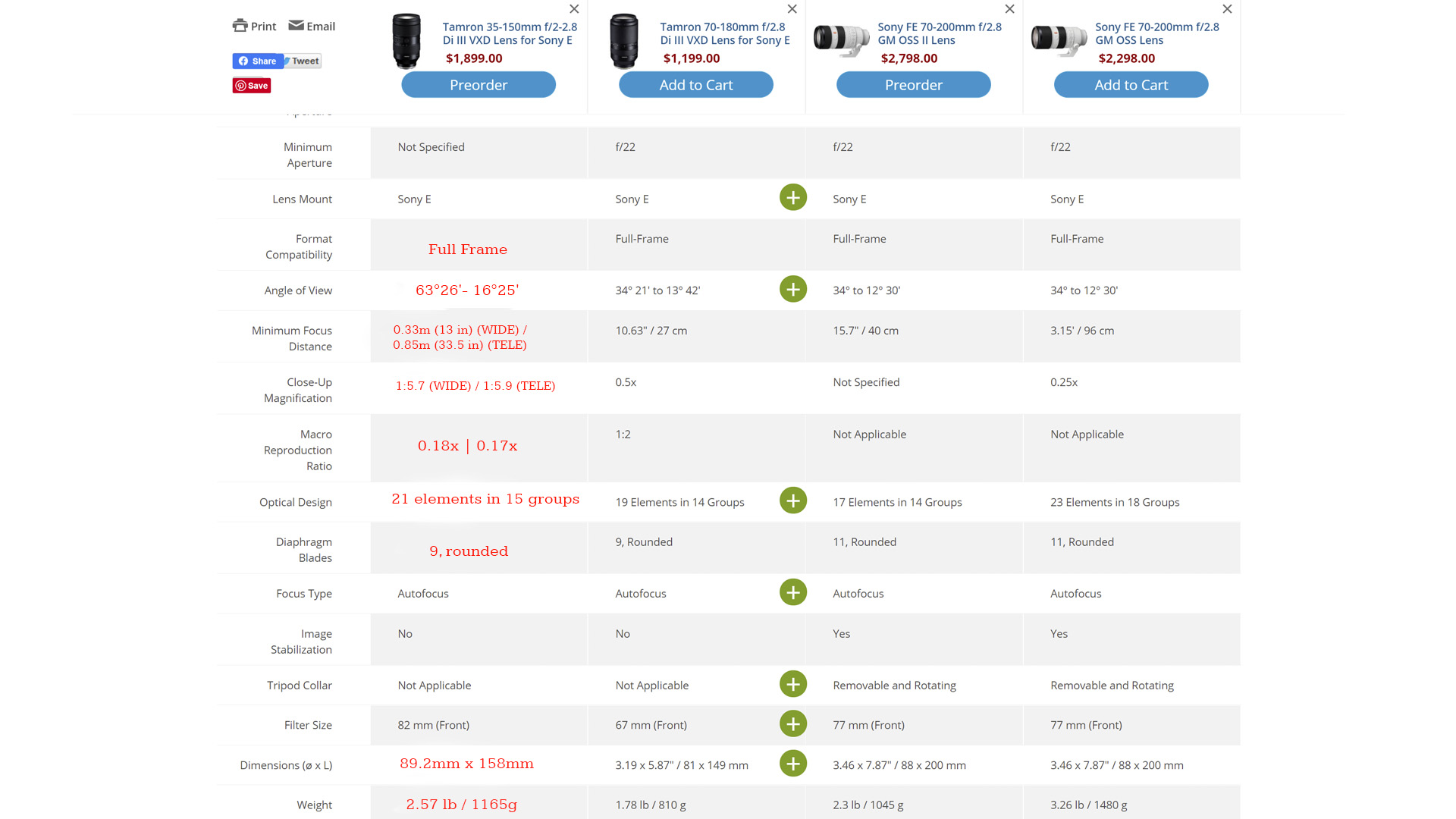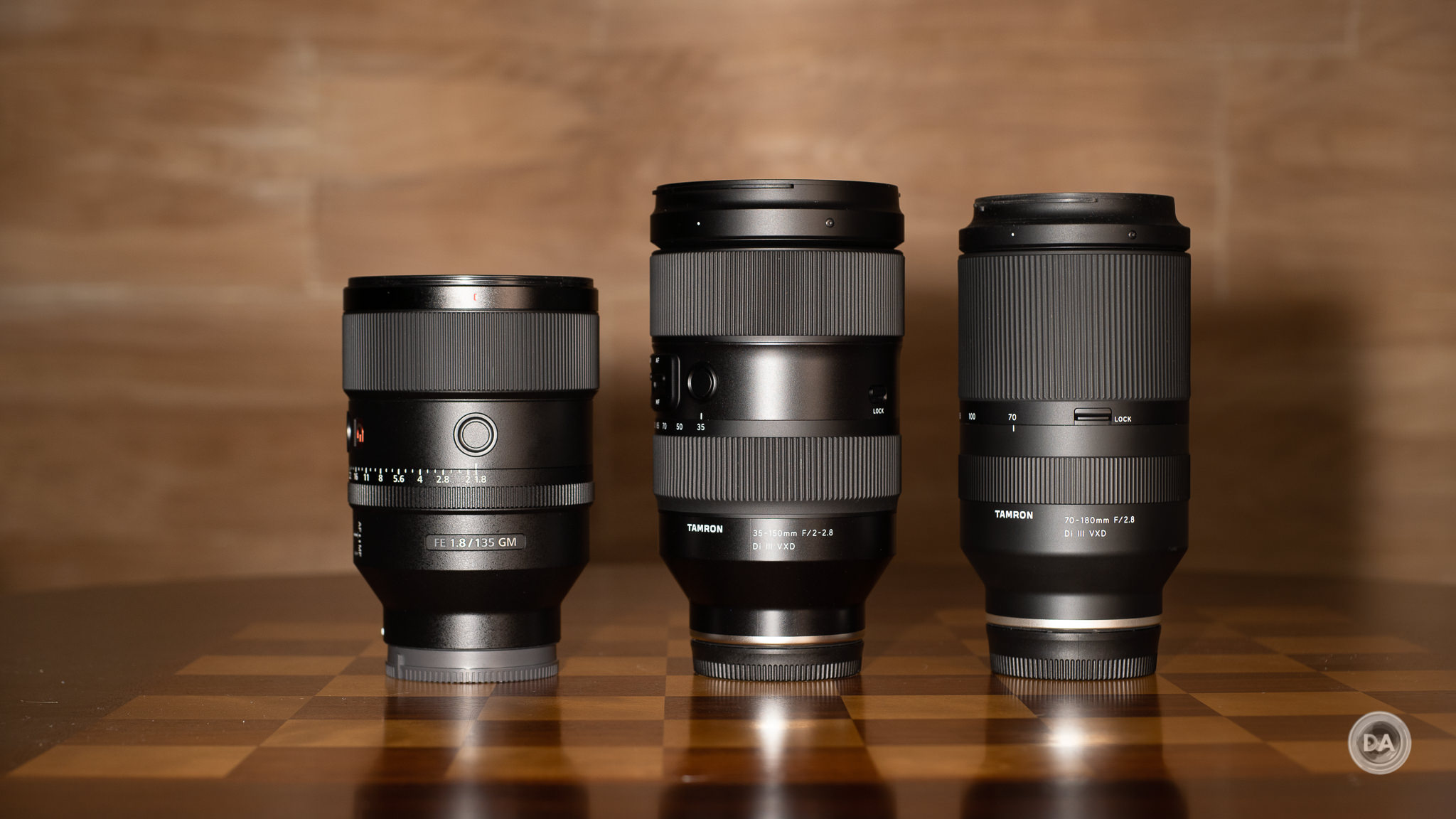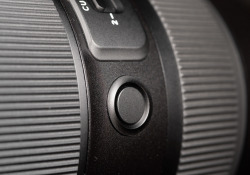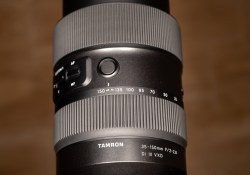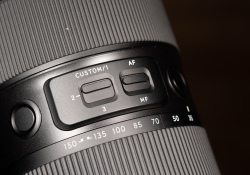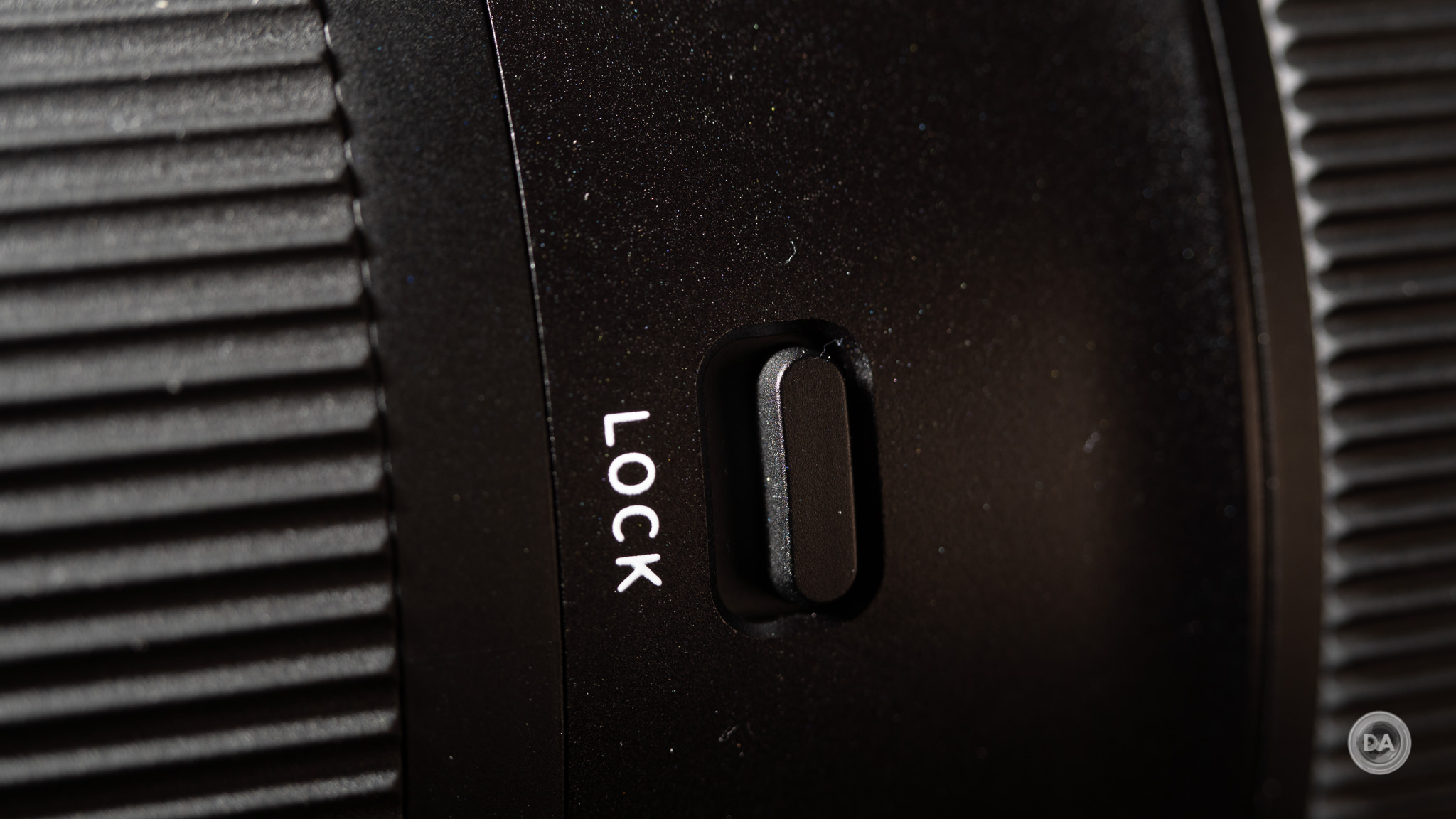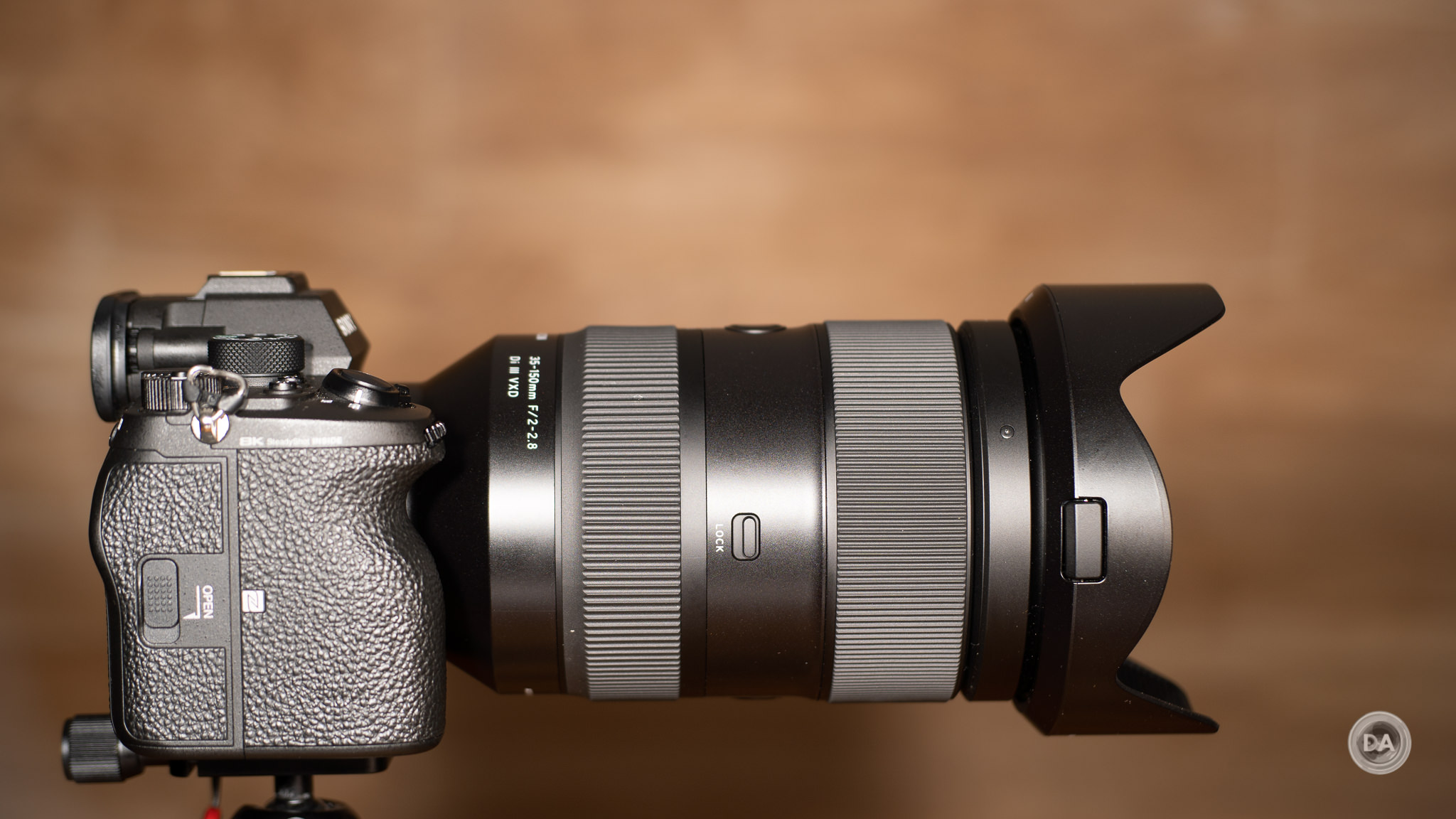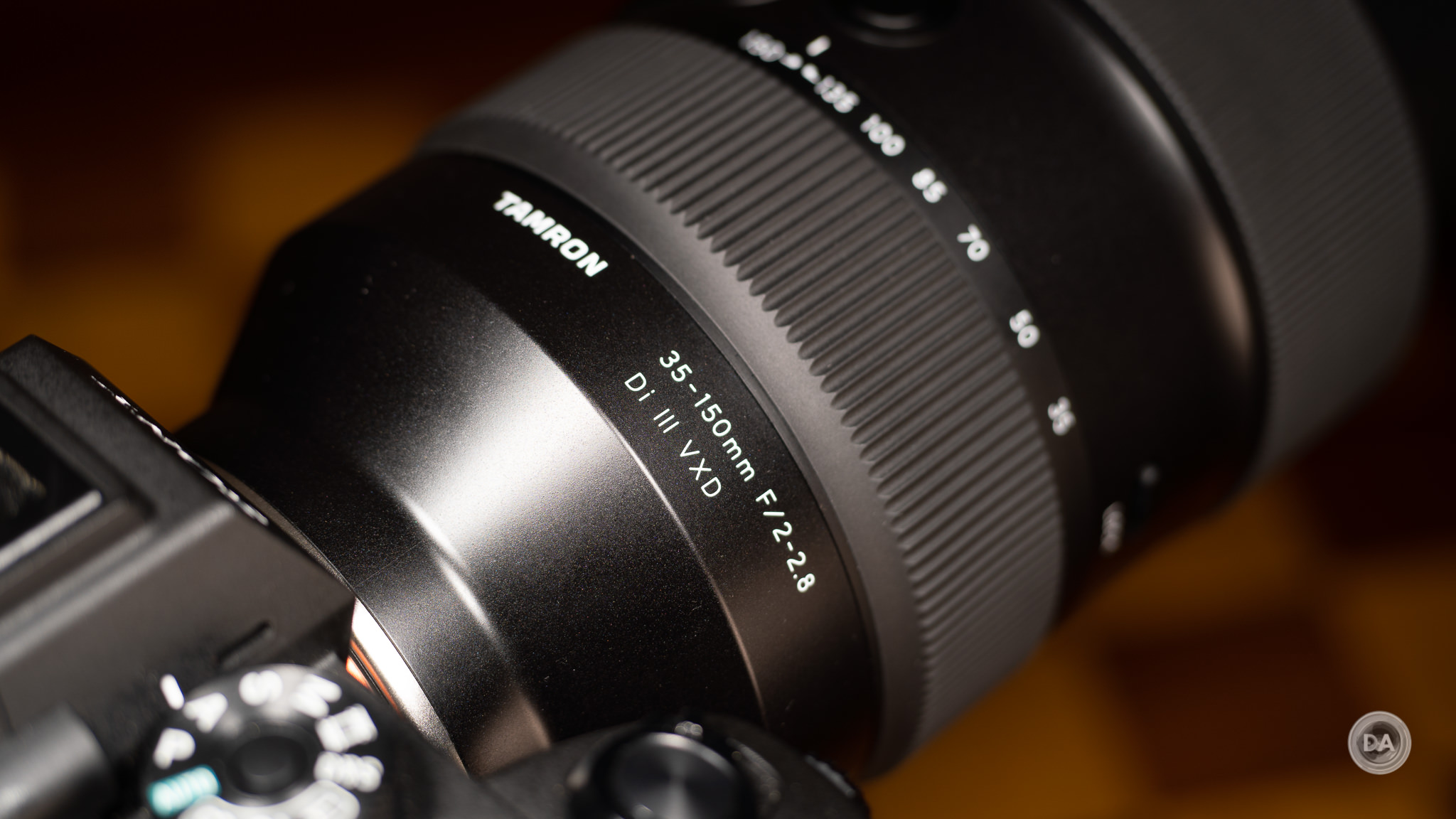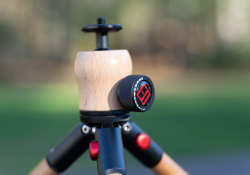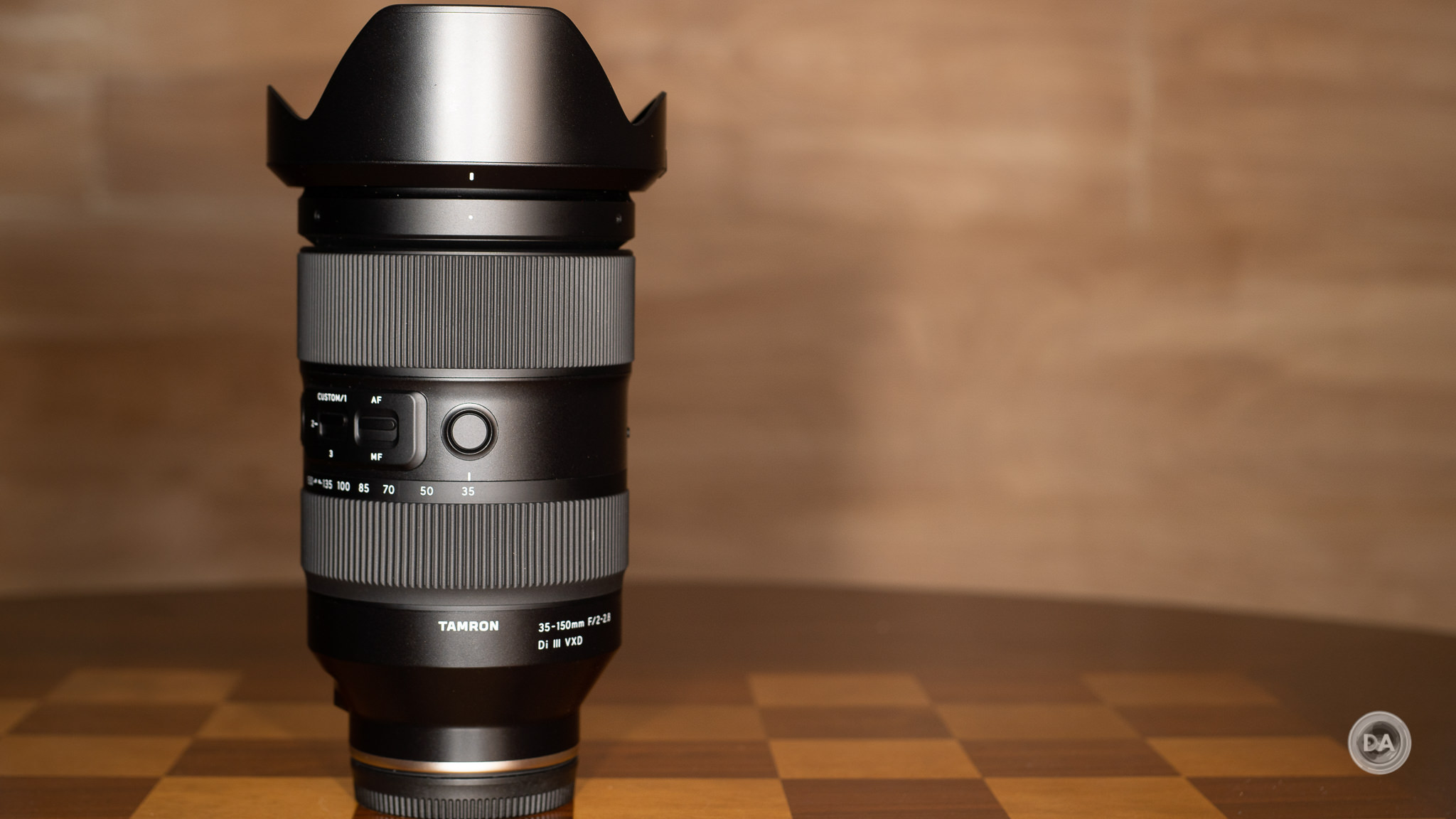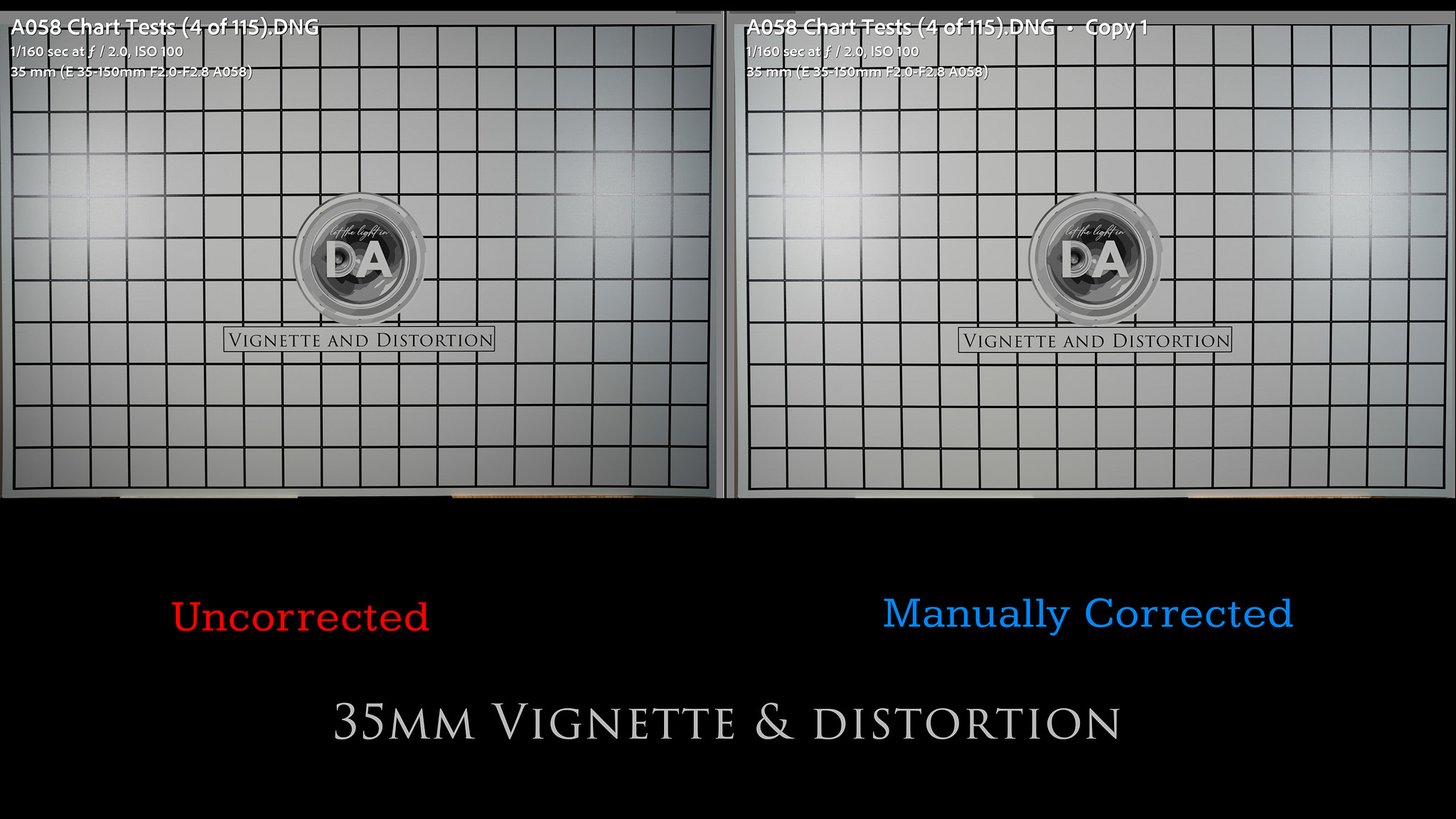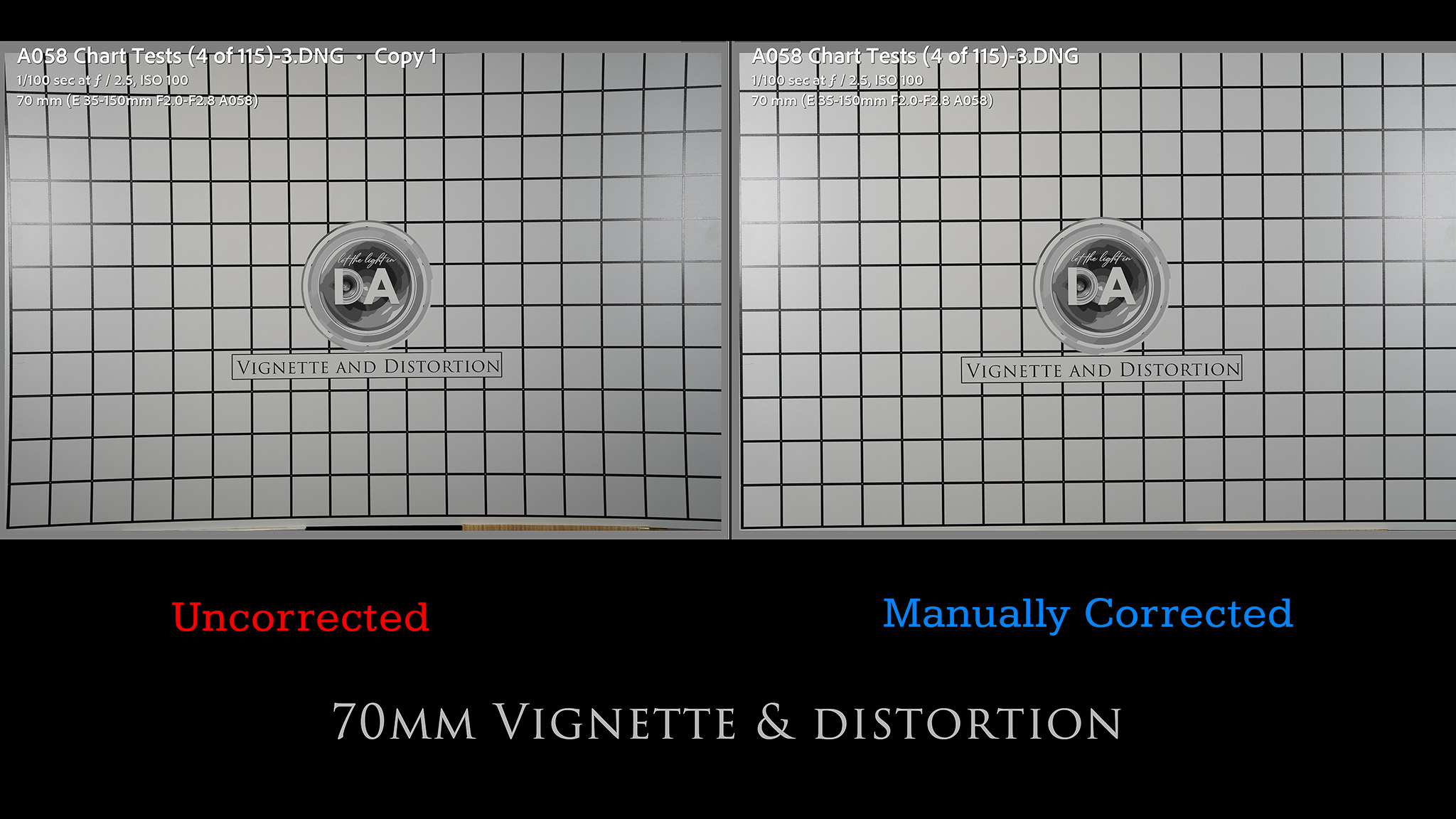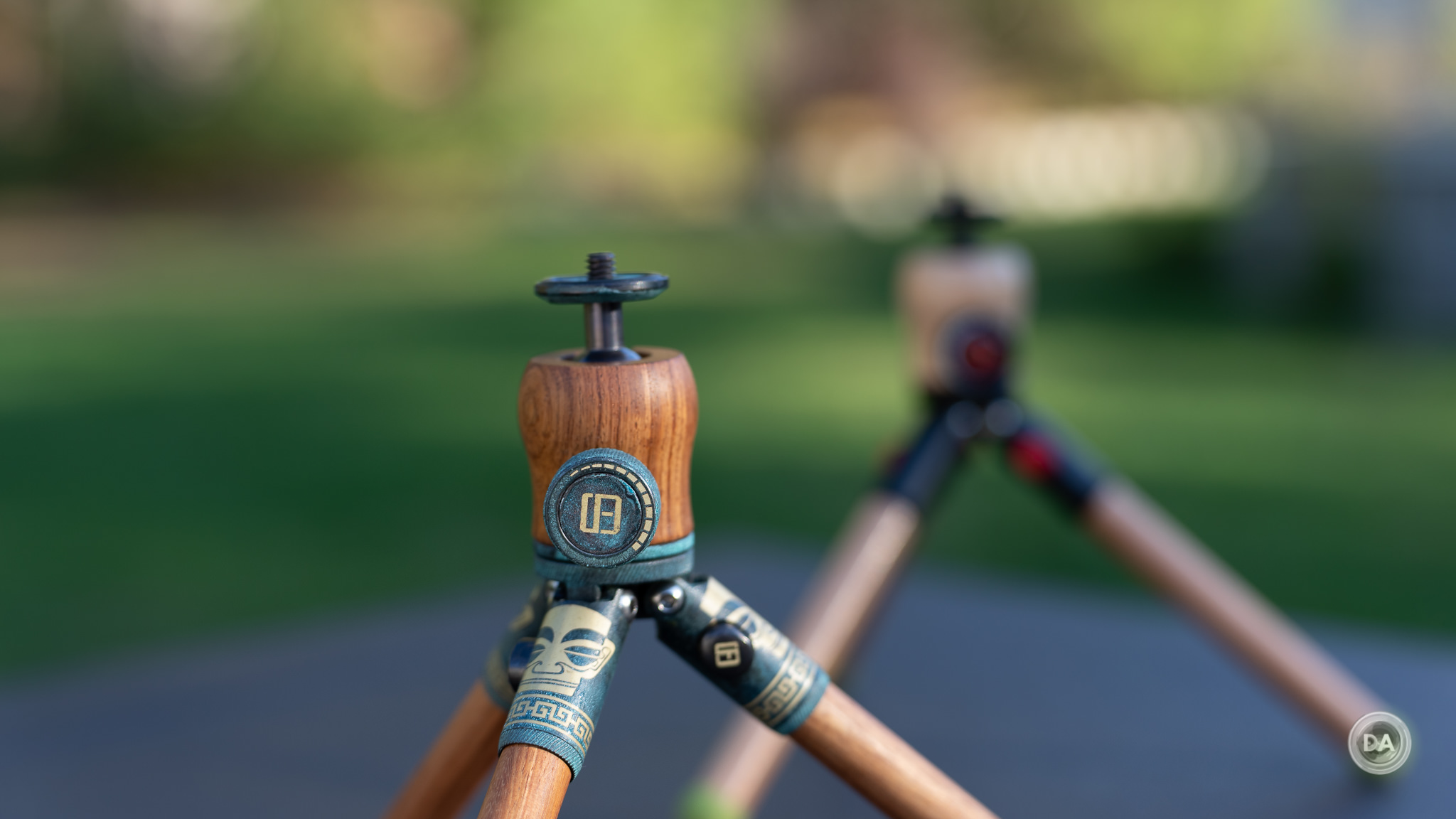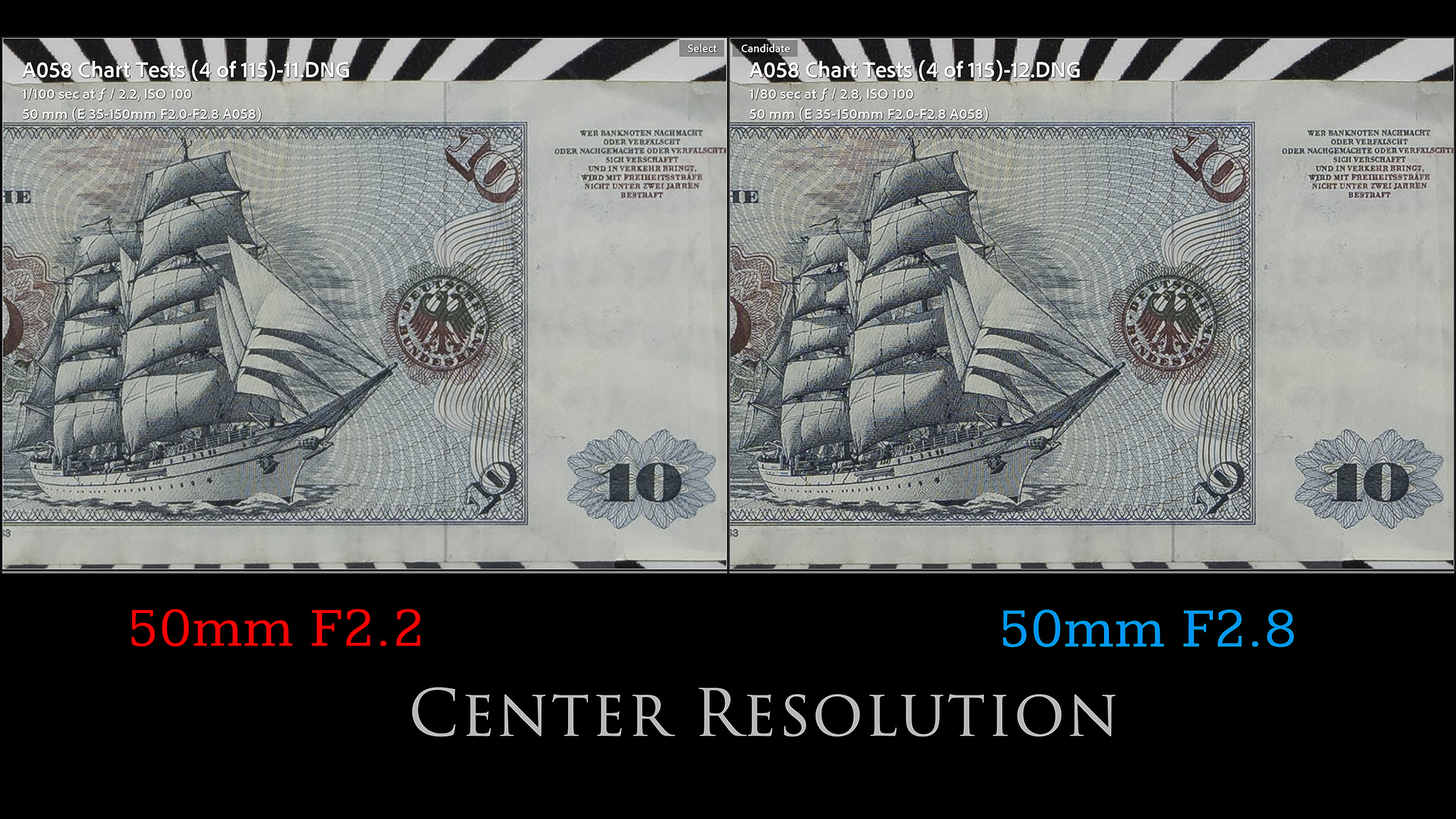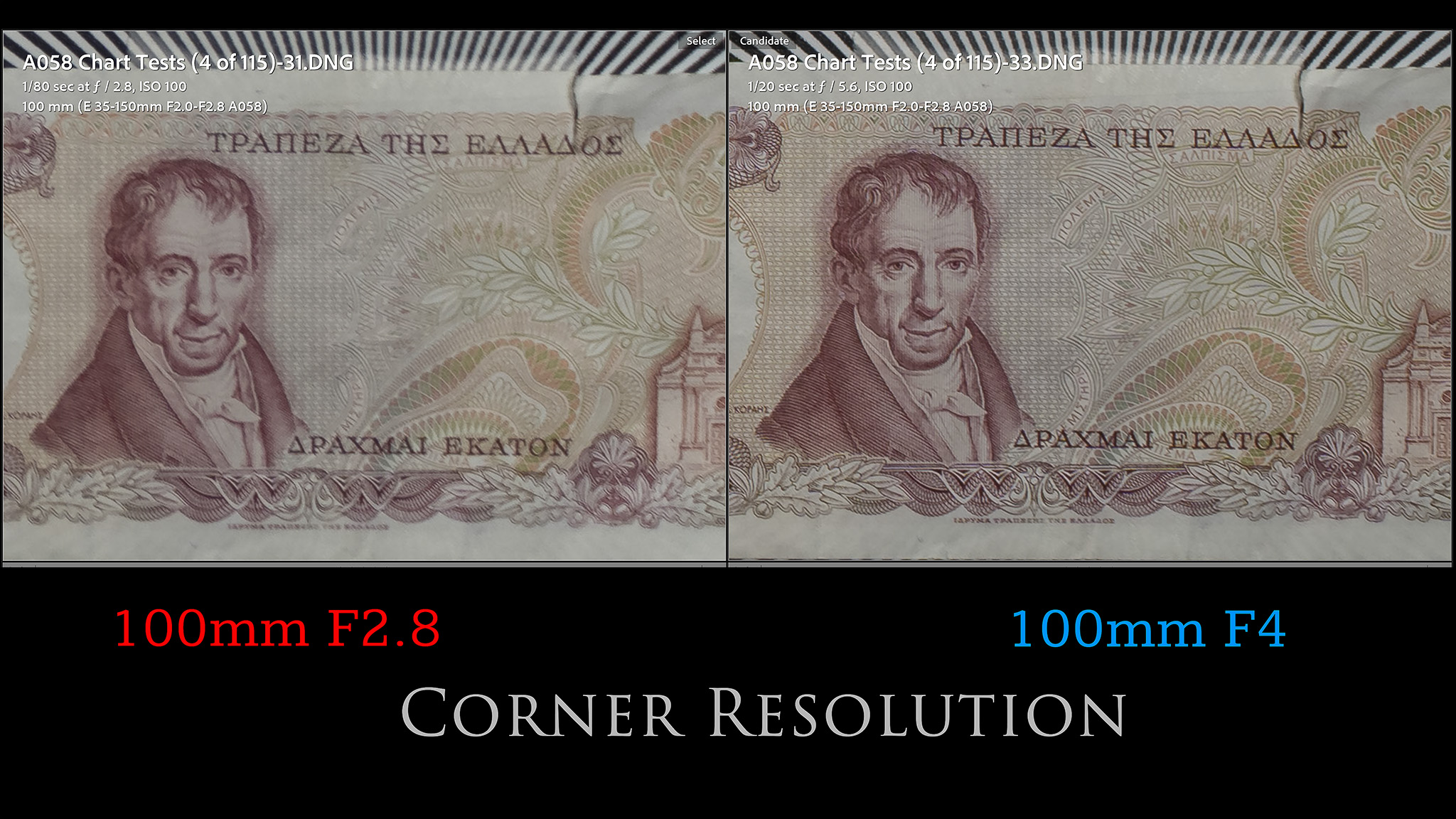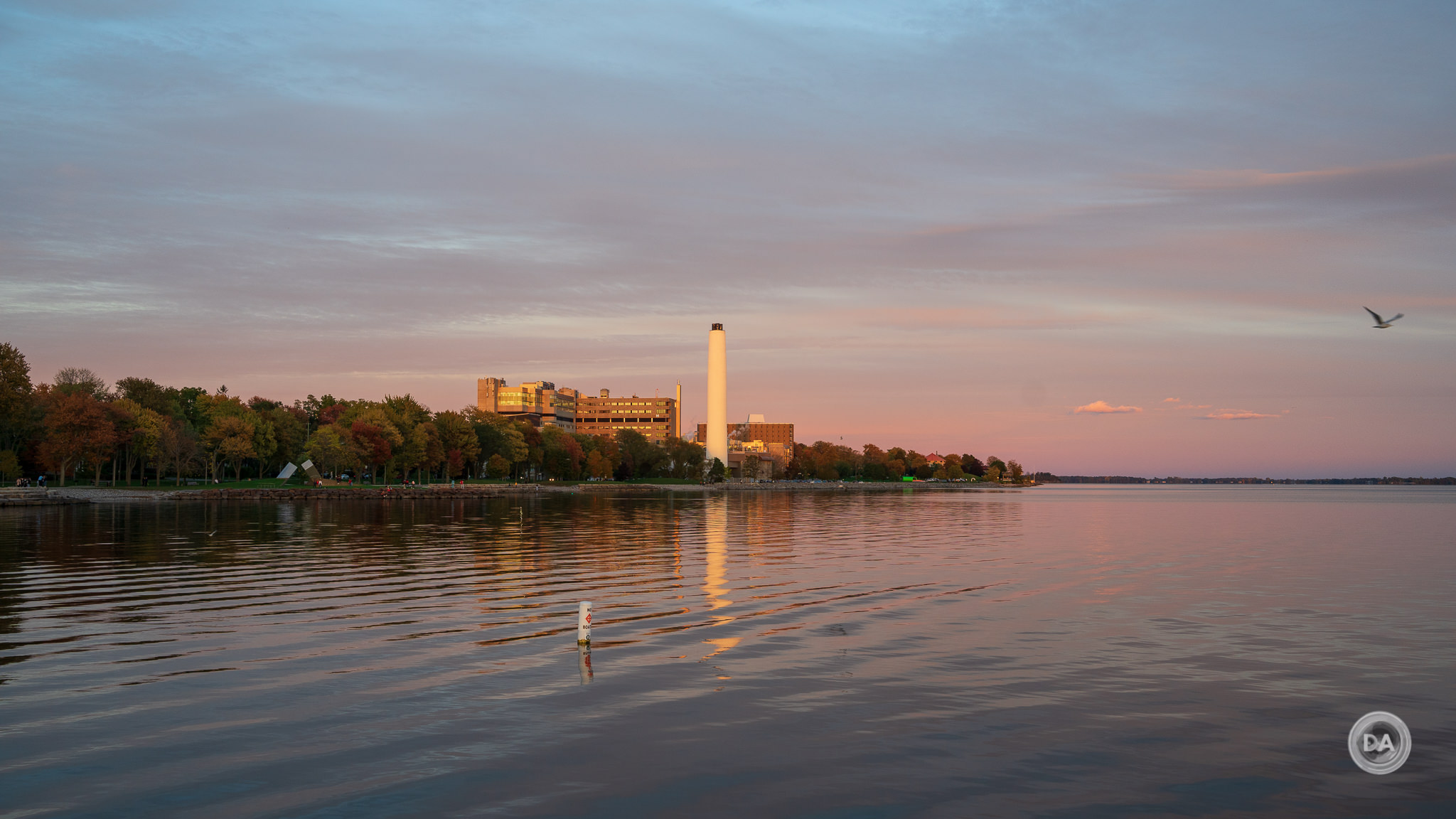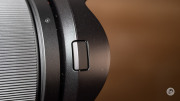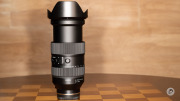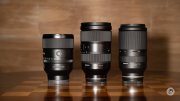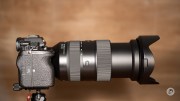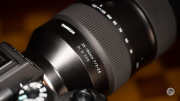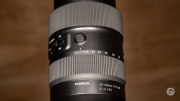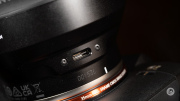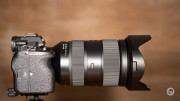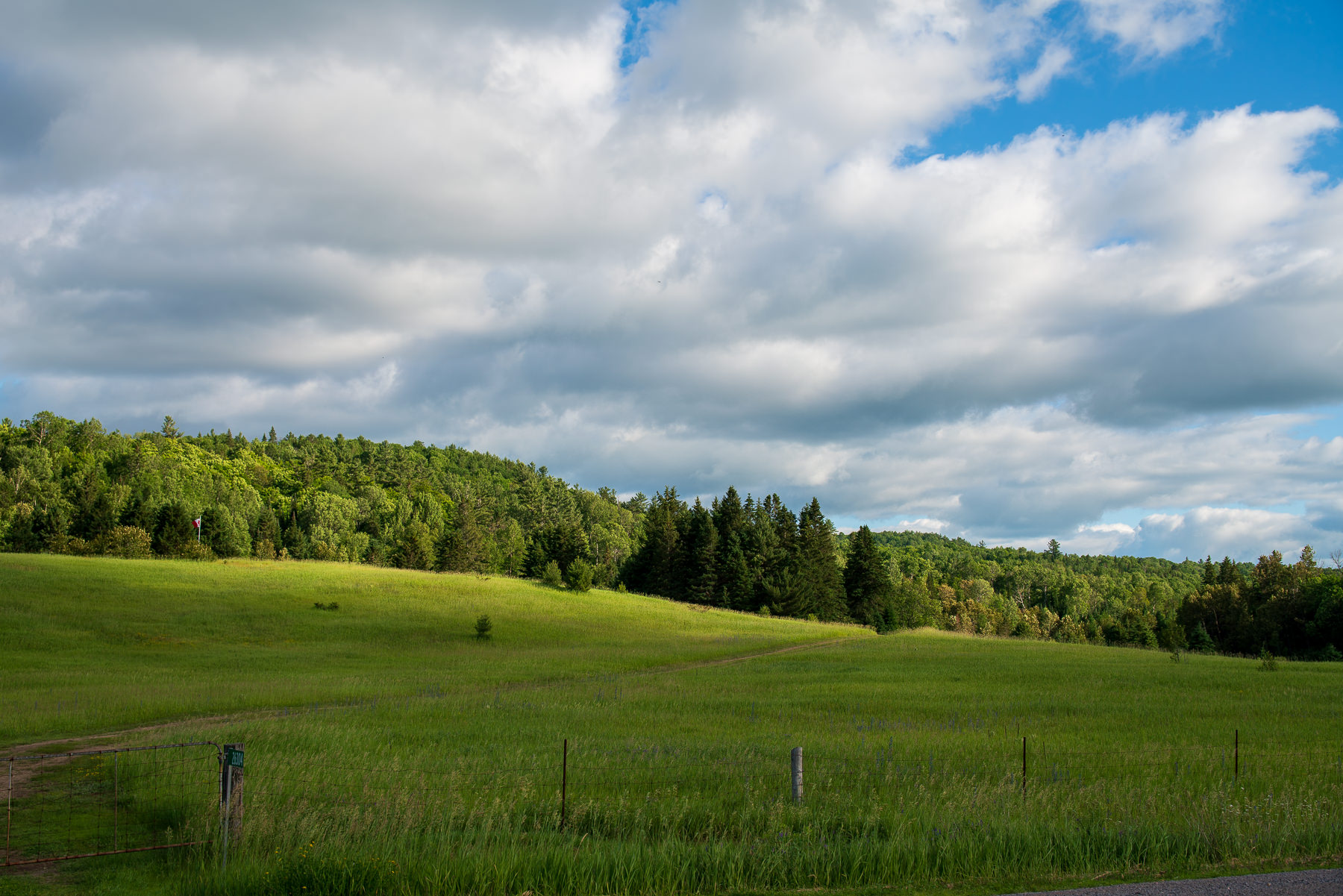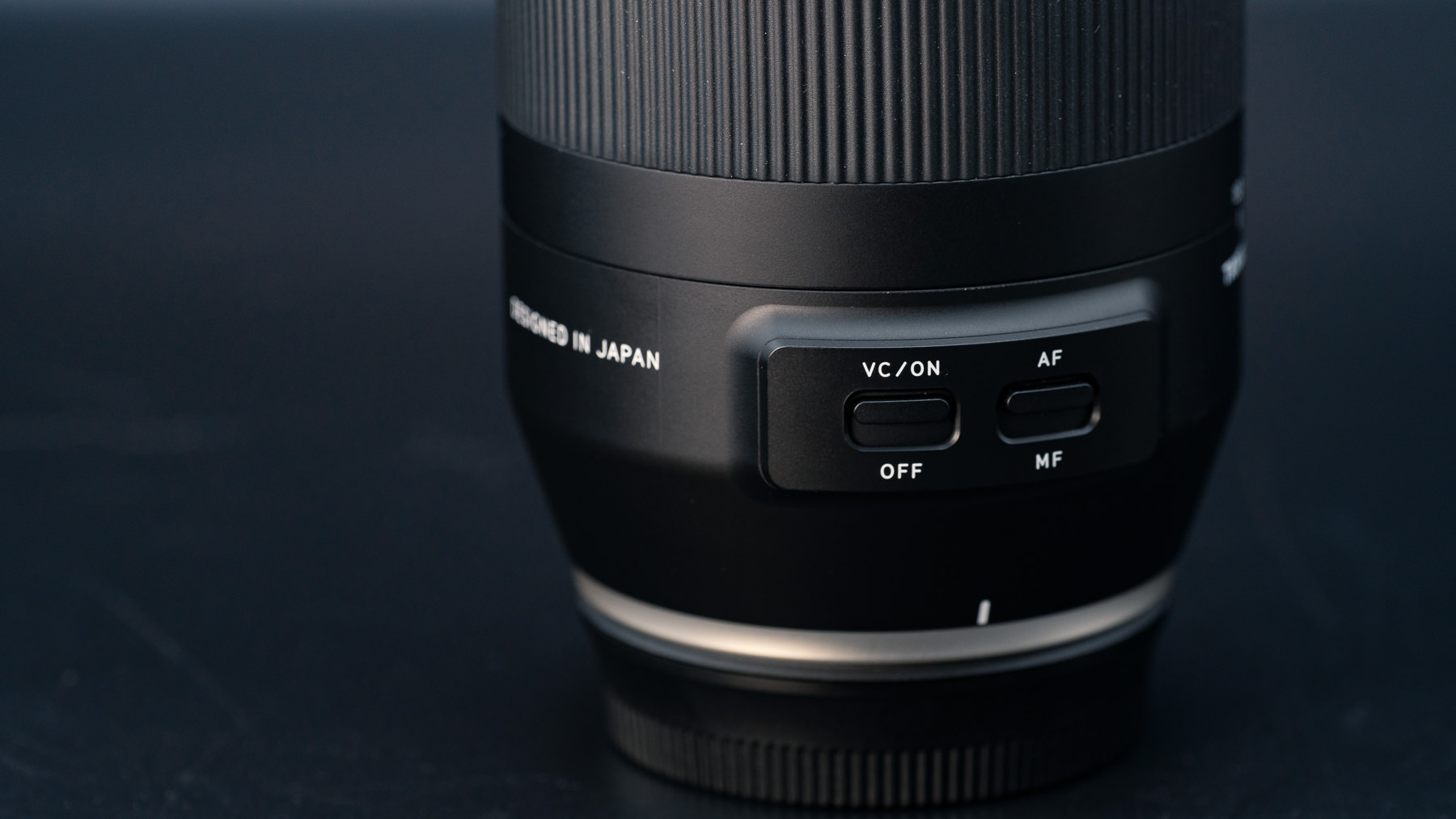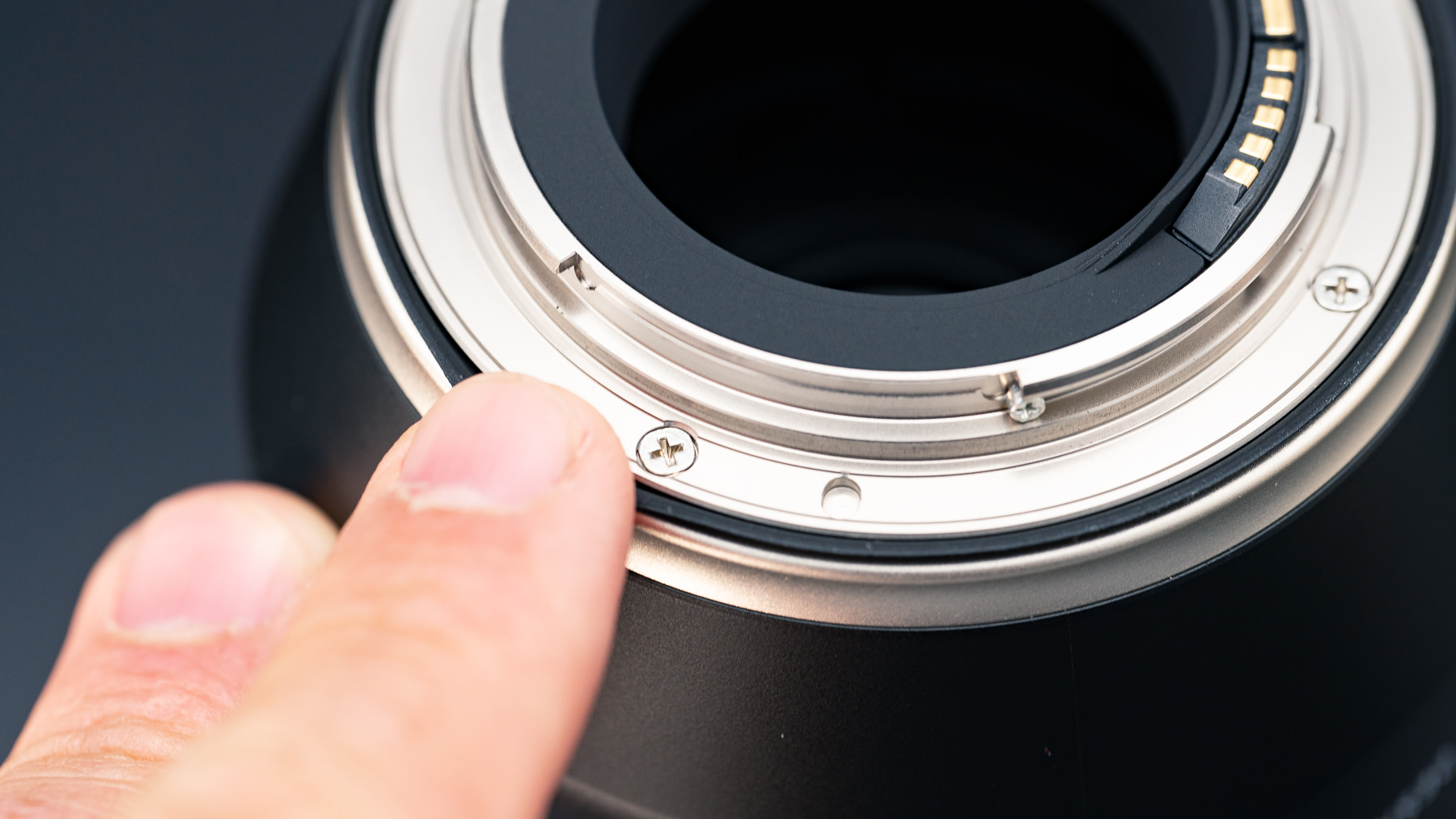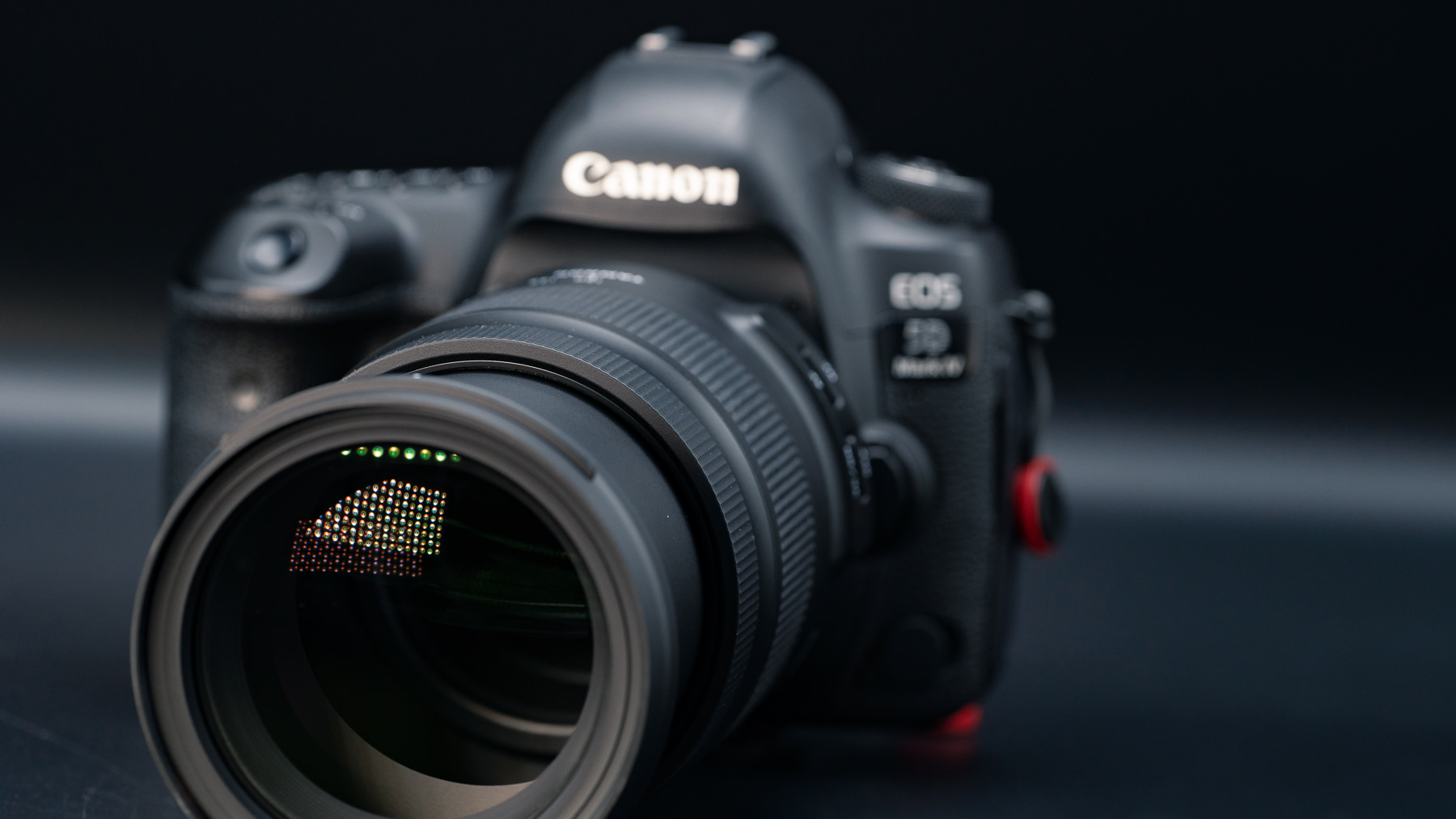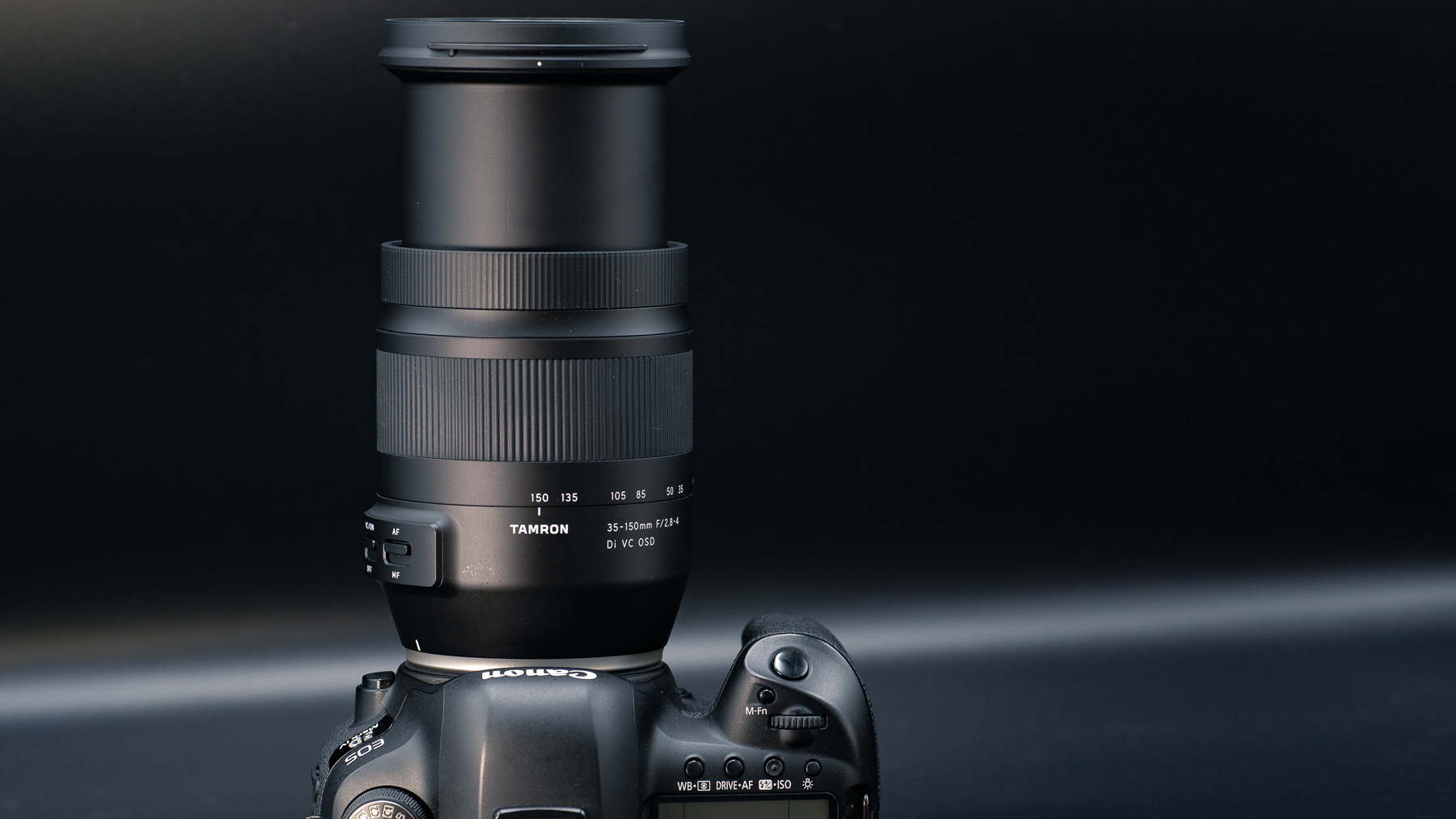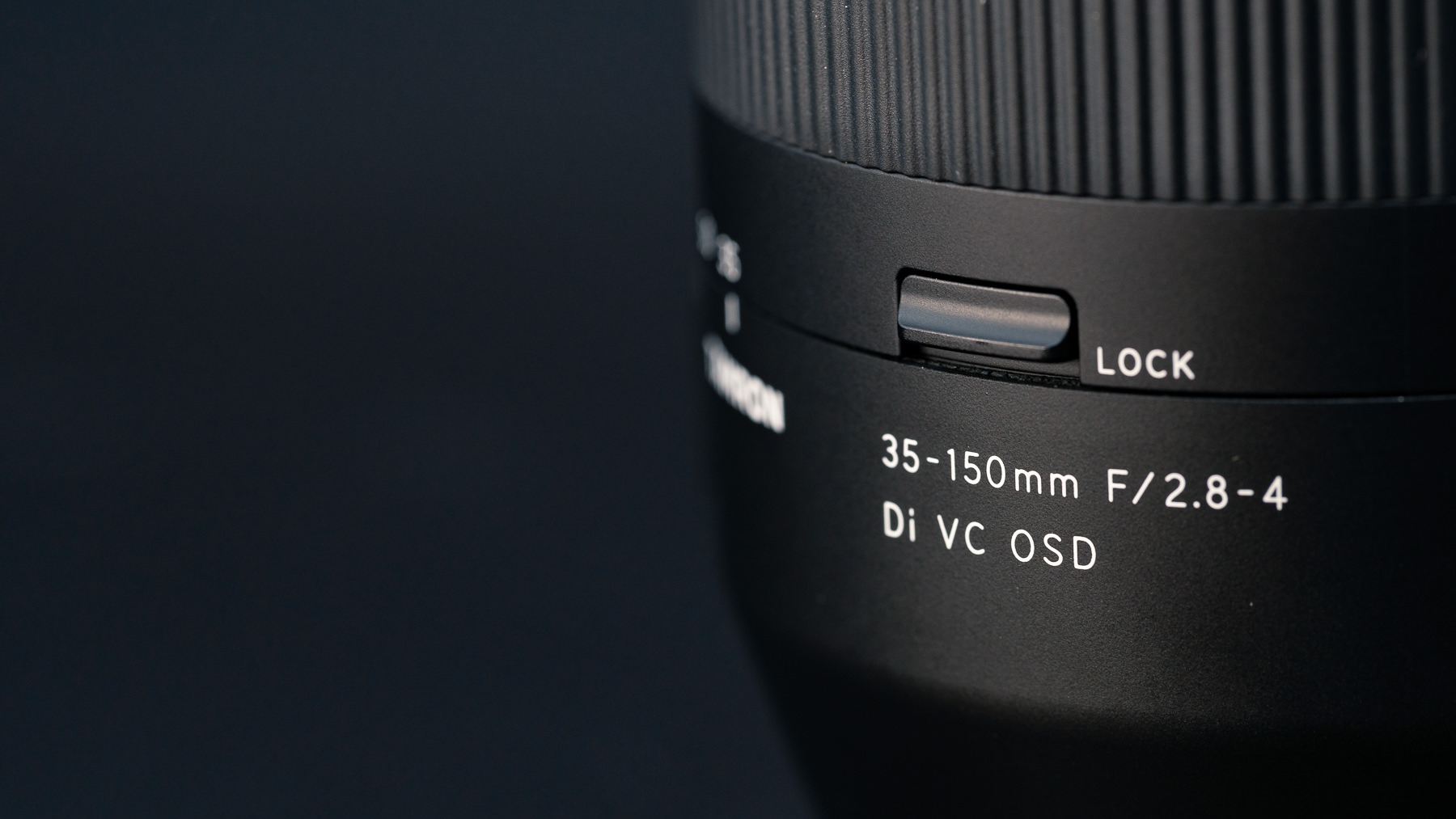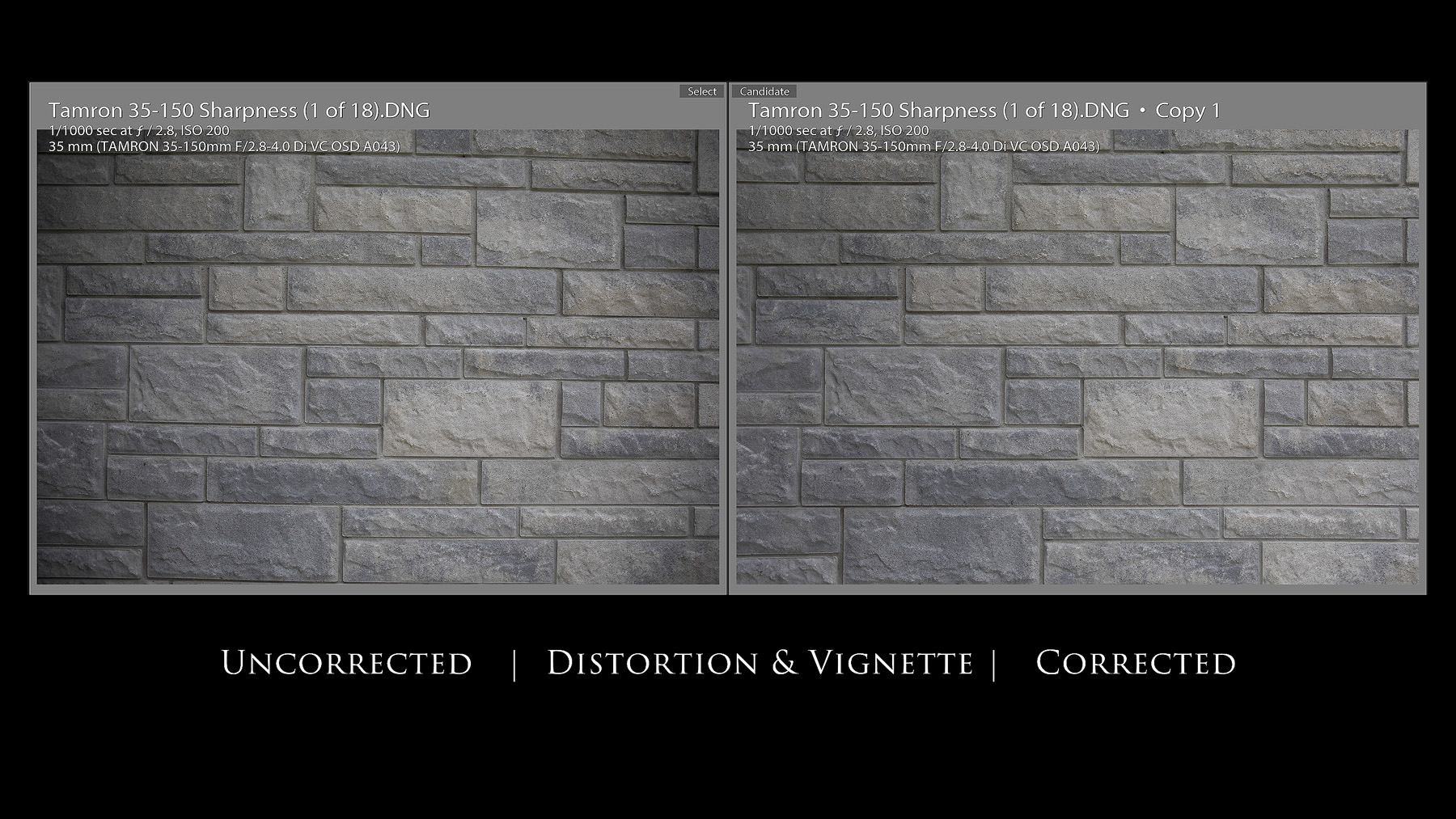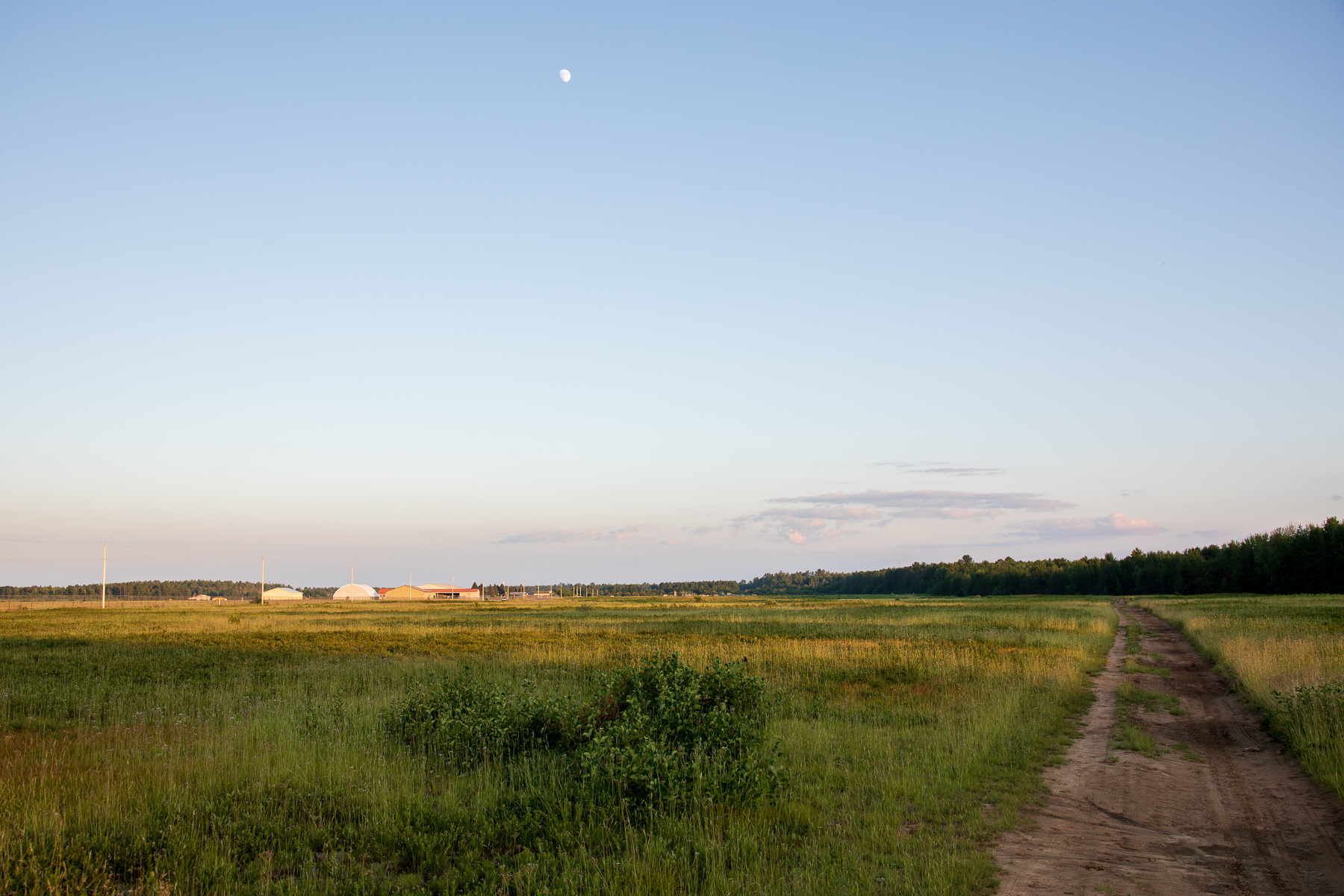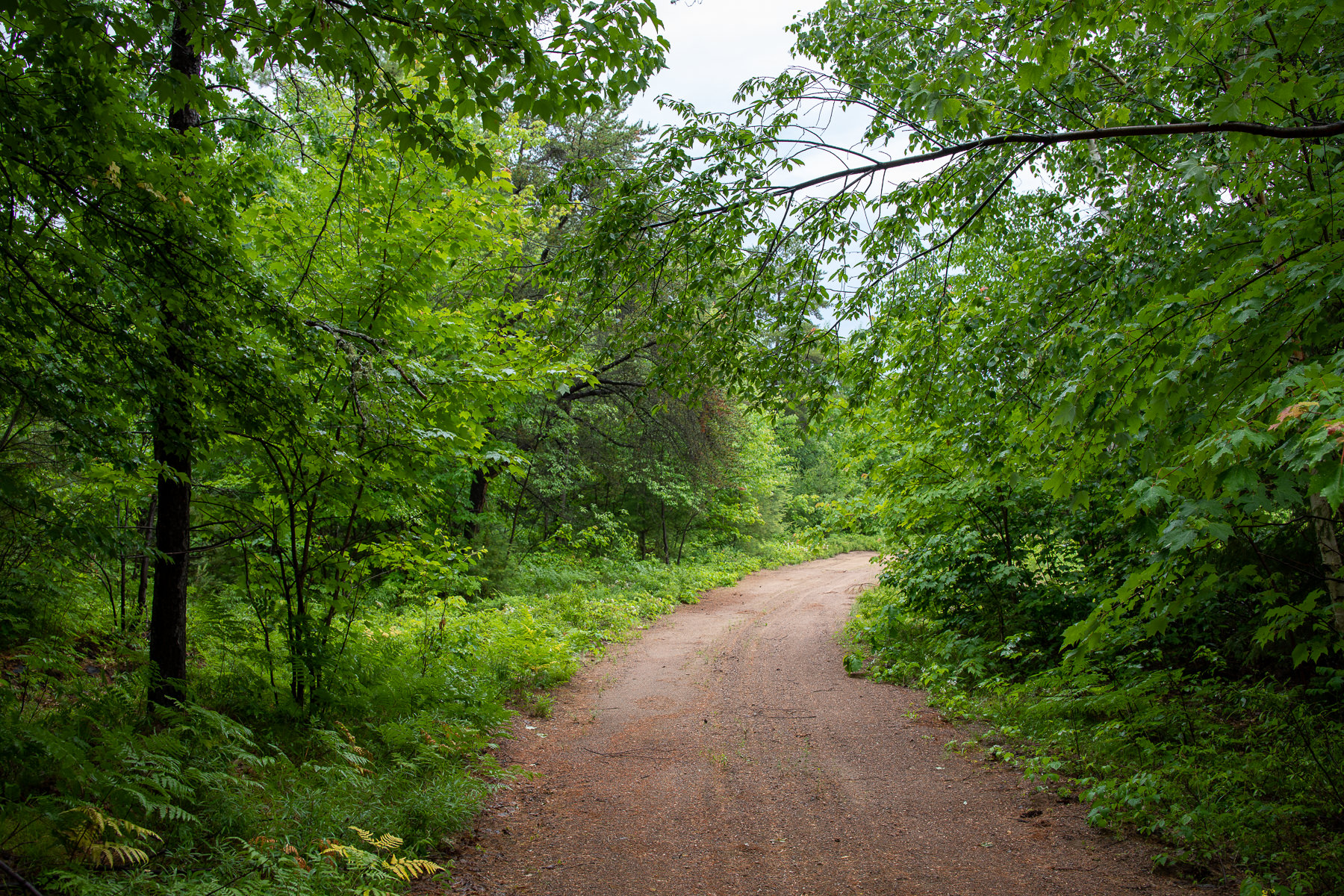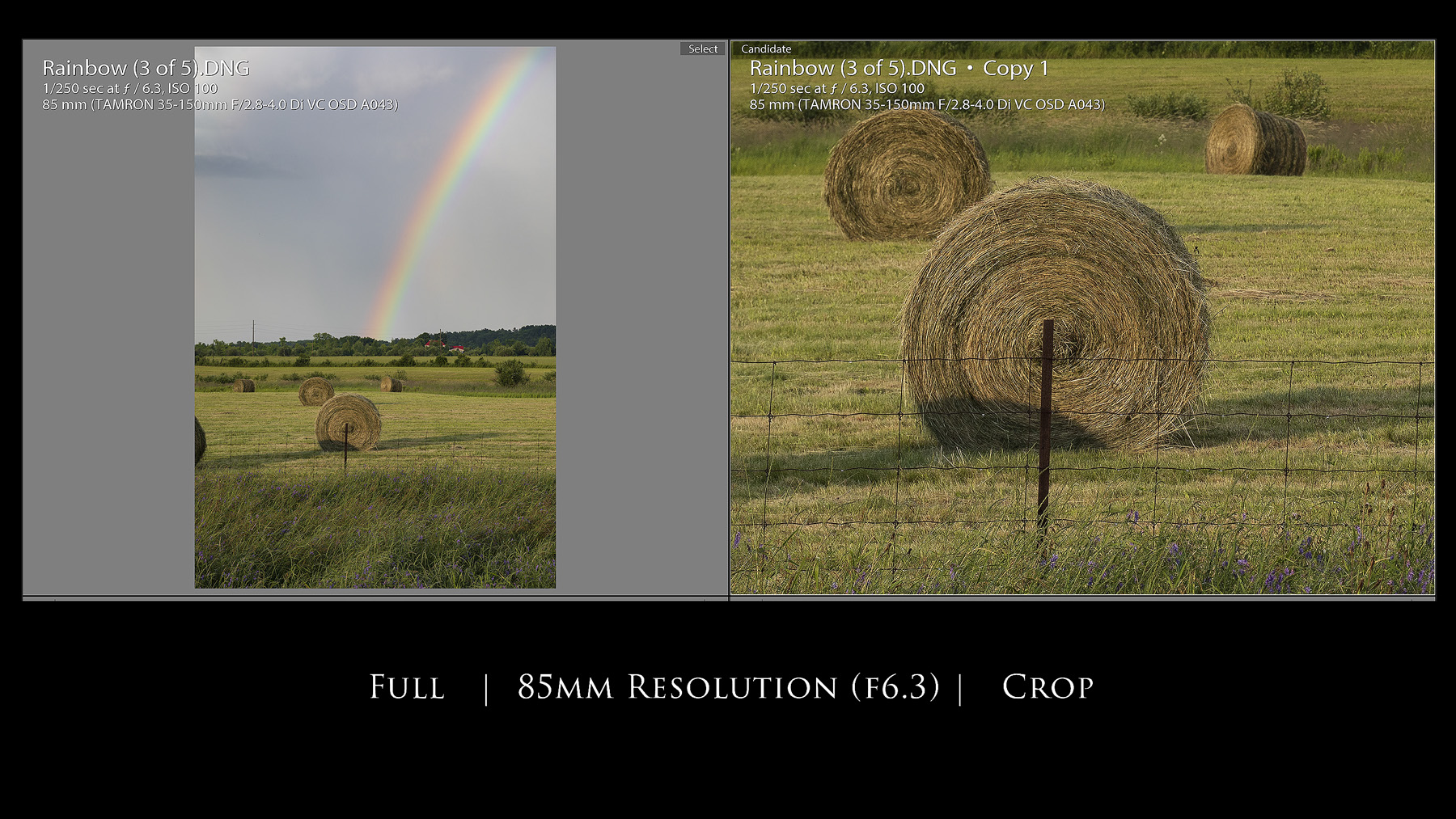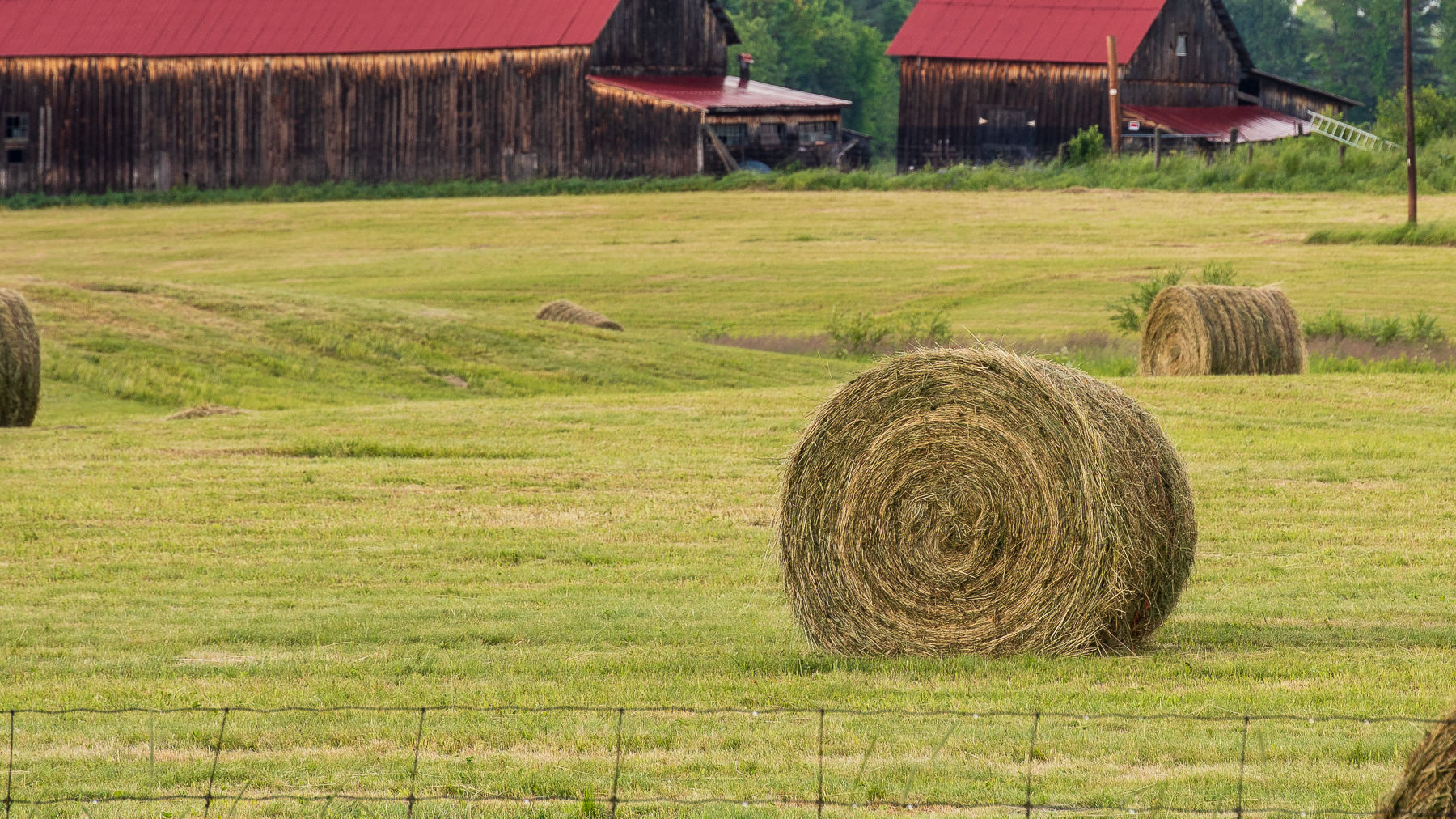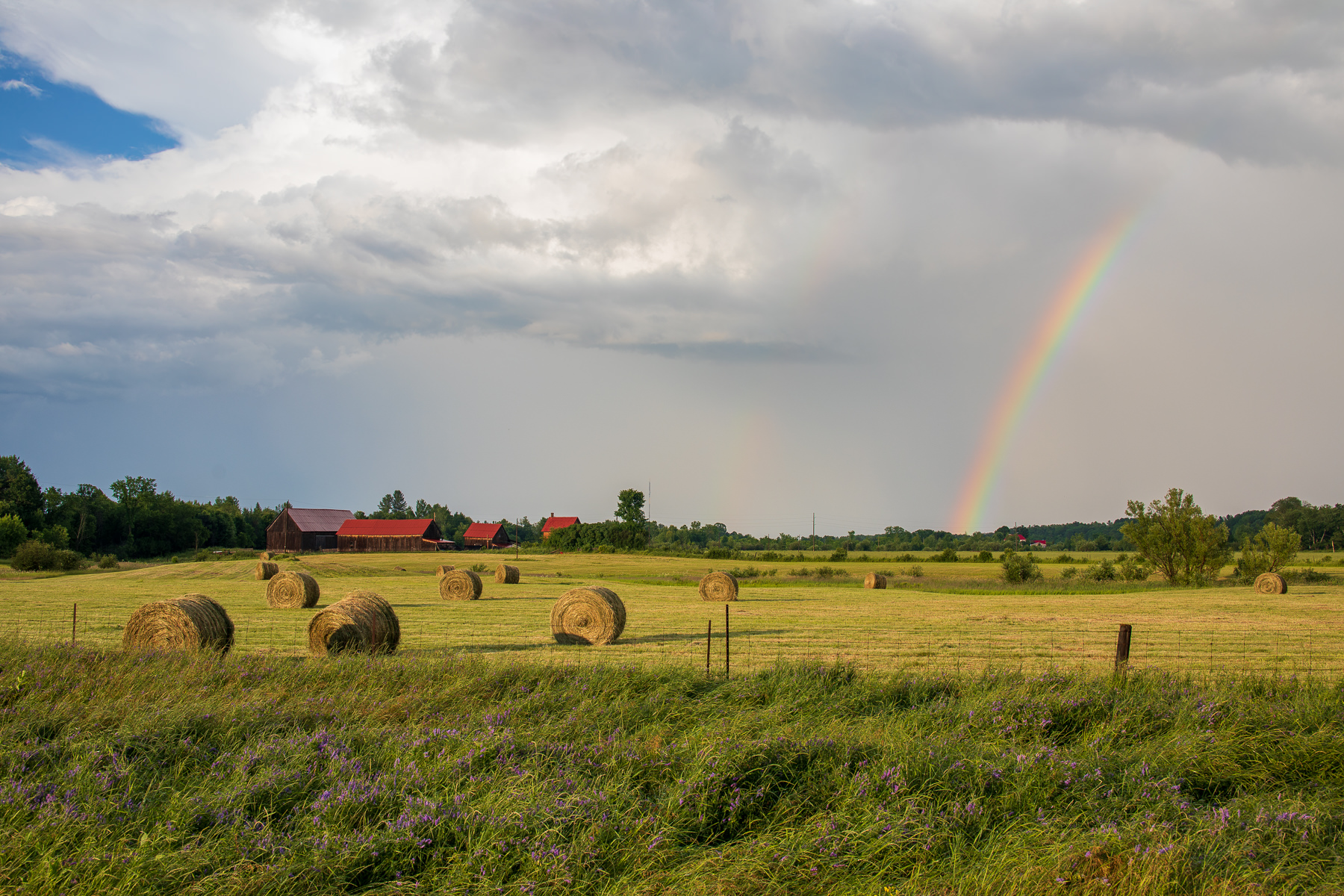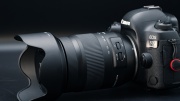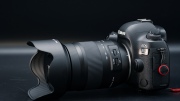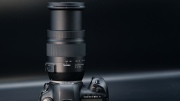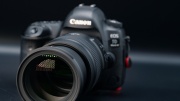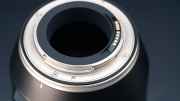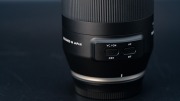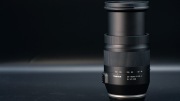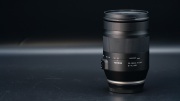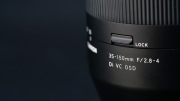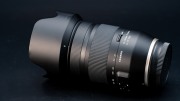The excitement was palpable from the moment that Tamron first introduced the idea of their newest lens, a lens that busts genres and gives Tamron another “world’s first”. That lens is the Tamron 35-150mm F2-2.8 Di III VXD (internally called A058, as we’ll refer to it for brevity in this review). Let’s give you a little help with what all of those letter mean in the name in case you don’t speak “Tamron”. Di III is the designation that Tamron uses for mirrorless mounts (in this case Sony FE). VXD refers to the focus motor employed here (Voice-coil eXtreme-torque Drive), which is currently Tamron’s most premium autofocus system. Traditionally the two major professional full frame zooms are the 24-70mm and 70-200mm F2.8 lenses, a pairing that Tamron has long had on other platforms. I’ve shot plenty of weddings and events with a 24-70 on one camera and a 70-200 on the other. The new 35-150mm is a genre-buster first in that it combines the heart of both of those zooms into one, going from 35mm:
…to 150mm:
There’s no question that this is an incredibly versatile range, and, while it doesn’t go quite as wide as a 24-70 or quite as long on the telephoto end of a 70-200, it does enough of both to be a majorly useful wedding, event, and portrait lens. Add to this that it is the first zoom lens beginning at a maximum aperture of F2 on Sony and you have a lens that has a lot of photographers licking their chops and thinking about how they could combine multiple lenses into one professional “do-it-all” lens. Tamron first developed this unique focal range in 2019 for Canon and Nikon DSLRs in the form of 35-150mm F2.8-4 VC OSD lens (my review here), and that lens really exceeded my expectations optically while being held back by a subpar autofocus system. It also had the misfortune of coming out about the time that interest in DSLRs was waning in favor of mirrorless systems, where almost all of Tamron’s more recent development has been. The A058 is a completely different animal, however, as it is professional grade to the hilt and, at $1899 USD, is (to my knowledge) easily Tamron’s most expensive lens on the market at the moment.
The Tamron 35-150mm F2-2,8 VXD isn’t a small or cheap lens, but after spending some time with it, I remain very interested in this lens. It does have a few flaws (as we’ll see), but I’m not convinced that it has any fatal flaws. You can check out my thoughts as to whether or not the A058 should be on your radar in either the long format definitive or standard video review below…or just keep reading.
Follow Me @ Patreon | My Newsletter | Instagram | Facebook | DA Merchandise | Flickr | 500px
Thanks to Tamron USA for sending me a retail loaner copy of this lens. As always, this is a completely independent review. The opinions here are completely my own. *The tests and most of the photos that I share as a part of my review cycle have been done with the new Sony Alpha 1 which will serve as my benchmark camera for the foreseeable future (my review here).
A058 Build, Handling, and Features
The A058 is a larger lens than many expected. How could it not be when it has both a larger zoom ratio (4.3x) than either a 24-70mm (2.9x) or a 70-200mm (2.86x) while also having a larger maximum aperture over some of that zoom range? The truth of the matter is that this is actually a fairly moderately sized lens with that in mind, though in some ways the perception challenge that Tamron is going to face is actually due to their successful downsizing of the 70-200(ish) formula with their very successful 70-180mm F2.8 VXD. That lens was only 149mm long (about 50mm less than the typical 70-200mm) and weighed only 810g. The 35-150mm is a larger lens, to be sure, but not dramatically so. It is a little bit longer (158 vs 149mm) and more noticeably heavier (1165g vs 810g). In fact, it’s about 120g heavier than the newly downsized Sony FE 70-200mm F2.8 GM II, though it is still significantly shorter than that lens. Here’s a look at how the specs break down:
Clearly Tamron’s priority here was not compact size and weight but rather quality of performance. As I’ve noted about a few other recent lenses, I suspect that the basic physical realities of the A)58 will produce a natural sorting effect on potential buyers. It’s less of travel lens (unless you don’t mind some size and weight) and more of a very versatile event and portrait lens. As a wedding photographer, for example, I’m accustomed to carrying two cameras with more than double that amount of weight between them. What if I could carry just one camera with the A058 on it? I’ve often shot a wedding with a 70-200mm (roughly 1400g) and then a pro-grade 35mm like the Canon 35mm F1.4L II (760g), but because the 35-150mm goes as wide as 35mm, I wouldn’t need that second focal length. That’s where the potential weight savings might be.
Essentially the A058 has the girth of my 135mm F1.8 GM and the length of the 70-180mm F2.8 from Tamron, as you can see here:
Tamron’s design philosophy on Sony has been pretty spartan, but the A058 is a more expensive lens and has been given a little more premium treatment in terms of features. We have focus hold buttons in a couple of positions to allow easy access whether in landscape or portrait orientation. As with Sony lenses, this button can be programmed to different functions.
There’s also a bank with a couple of switches. These include the standard AF/MF switch (always welcome) along with a secondary switch that allows access to multiple custom modes. These custom modes can be programmed via another new feature, and that is the inclusion of a USB-C port on the side of the lens. Simply attach the lens to your computer and download Tamron’s free Lens Utility software, and this opens up a variety of ways to customize the performance of your lens. Some of the potential functions include a preset A-B focus pulls, presetting a specific focus distance (like for an event), switching between focus and aperture for the focus ring (like Samyang), changing the speed and/or tension of the manual focus ring, and more. You can also do direct firmware updates via the USB port. Essentially this is the functionality of the Tamron Tap-In Console now accessed through a weather sealed USB-C port, meaning that you don’t have to buy something in addition. Here’s a quick look at the functionality of the Lens Utility software, or you can visit this page to download the software and/or get more information:
We’ve also got a zoom lock switch to prevent zoom creep, though I didn’t actually encounter any real creep while out hiking with the lens.
Also present on the barrel is two rings. The closer (and slightly narrower, though both are wide) of the two is the zoom ring. I’ll make a minor complaint here, as this ring’s position is opposite of the other two Tamron lenses I have been testing at the same time (the 28-75mm F2.8 G2 and the 18-300mm VXD). While hiking and doing a portrait session with both lenses, I found myself continually reaching for the wrong ring because they were reversed. I recognize that this was almost certainly an engineering necessity, but it is an annoyance nonetheless. On a positive note, the zoom ring’s friction is very well damped. It has a smooth, substantial zoom action (not light, however) and there is a moderate inner barrel extension of about 4.5mm. The tolerances are tight, and there is not wobble or play in the barrel.
The second ring is the manual focus ring and it is near the front of the lens, and, surprisingly, it is even wider than the zoom ring. This is part of why I reached for it, as not only it’s position but its size is not conventional. (like all mirrorless lenses) is focus-by-wire, meaning that focus input on the focus ring is routed through the focus motor to move the elements. Manual focus emulation is quite good, and the good, thick focus ring gives the impression of being a real manual focus experience. The addition of the USB-C port means that that you also have more control over the behavior of the focus ring. This includes being able to control the rotation of the ring and to choose whether the focus action is linear or non-linear (speed sensitive) in behavior. That just adds to the value of the ring.
Tamron has included a nicely made, fairly shallow lens hood that (in a rare move for Tamron) has a locking mechanism. It bayonets into place very cleanly and helps provide some shading along with some bump protection. You’ll also notice up front that Tamron has (necessarily) abandoned their 67mm front filter thread standard for this lens. We’ve got a larger but still standard 82mm front filter thread. It would have been physically impossible to design this lens with with such a small front element.
Tamron has worked to up their game in the physical appearance of their most recent lenses (I see similar changes to the Tamron 28-75mm G2). The finish is a little glossier and (according to Tamron) the finish has been upgraded to be more resistant to scratching and even fingerprints. The new finish makes the lens appear to be more like anodized metal, though I do think there’s still some engineered plastics in the construction. There’s a platinum-colored accept ring right near the lens mount. There is also some new sculpting to the lens design the gives it more shape. This does have some ergonomic value, as it makes the lens fit the hand a little better. It is worth noting that the lens does feel very good in the hands. Heavy, yes, but in a reassuringly substantial kind of way. Some will find the lens too heavy, but others will love the way it feels while using it. Anecdotally, I went to visit my son at university and walked all over the campus and the nearby waterfront with only the very thin Peak Design Leash strap I keep in my small camera bags. Despite the heft of the lens I walked with the lens for hours and never felt uncomfortable, though, to be fair, I am accustomed to heavier gear.
Tamron has really been nailing weather sealing, and that’s definitely the case here. There’s a rubber gasket at the lens mount that suggests at the weather sealing inside, and Tamron also shows a total of 10 other internal seal points along with a fluorine coating on the front element to give further protection. A fluorine coating not only helps protect the front element from scratches but also makes it water and fingerprint resistant and thus easier to clean. This is a professional grade lens ready for professional use.
Tamron’s recent trends regarding MFD (minimum focus distance) hold true here, as the lens sports two different MFDs for wide (0.33m/13″) and telephoto (0.85m/33.5″). You can get to about 0.18x magnification on the wide end (1:5.7) and 0.17x (1:5.9) on the telephoto end. Neither figure is exceptionally high, though useful enough to get some closer shots. Here’s what maximum magnification looks like first at 35mm and then 150mm along with a real- world close shot.
Both results are fairly good, with a little more contrast on the wide end but you can unlock creamier backgrounds on the long end and get a flatter plane of focus. Minimum focus distance will scale between these two extremes as you go throughout the zoom range.
Tamron has nine rounded blades in the aperture iris, and they claim that the aperture iris will stay circular for at least two stops down from maximum aperture. That seems accurate to me. Here’s a look at F2-F4:
There is some deformation near the edge of the frame, with one stop down (F2.8, here) being the best looking in terms of circular shapes while also being nice and big. F4 looks good as well, though by F5.6 you’ll start to see the edges of the blades a bit. This has an important function, though, as it allows for sunbursts at smaller aperture. The nine blades make for a slightly busy but fairly good looking sunburst effect, as you can see here.
Tamron elected to forego including their VC (Vibration Compensation – Tamron’s optical stabilization system) on the A058. Thus far only the big 150-500mm has included VC on their full frame lenses for mirrorless. They are clearly banking on the IBIS (In Body Stabilization) of Sony’s full frame cameras, and it does seem to do fine overall. The lens would have been larger and heavier had it included VC, so I’m willing to give them a pass here (as I did with the 70-180mm).
One area of internet consternation (whether real or imagined) is that the A058 has no tripod collar. Some people have concerns over the stress on the lens mount, though I think this is overwrought. This lens is far from being outside the realm of normal lens weight, and cameras are designed around the lens mount being strong. My only frustration with it was during the time I was trying to line up my test chart, and, the further you zoom out, the more the weight is towards the front of the camera and it puts a little more stress on the tripod head. So yes, a tripod collar would have provided better balance on a tripod, but again, it would have also added weight and expense. There will probably be a workable third party solution for those desperate for a tripod foot.
There’s no getting around that this is a fairly large and heavy lens, but it is clearly a well made lens that has very high functionality. I really like the new features that Tamron has elected to include, and the lens feels like it will be tough and durable. Even the much cheaper 28-75mm F2.8 RXD that I’ve owned for the last three years has held up well despite very frequent use. Tamron has moved more upscale with this lens, and time will tell if this move will pay off for them.
Tamron 35-150mm VXD Focus and Video Performance
Tamron has given the A058 their premium focus system, the Voice-coil eXtreme-torque Drive (VXD), which is a high end linear focus motor.
That makes five lenses that I’ve seen this focus system implemented on (also 70-180mm F2.8 VXD, 150-500mm VXD, 18-300mm VXD [APS-C}, and the 28-75mm F2.8 G2 VXD). The VXD motors are an improvement over the already good RXD focus motor by adding more torque into the mix. This is a big lens with big elements, so it needs a powerful focus motor to move them quickly. That’s what we have here, and, for the typical things this lens will be used for, the focus system is impressively good.
As noted, I view this lens primarily as an event and portrait lens, and it certainly worked beautifully well when people were in the frame. I did a little portrait session with my youngest son, and eye detect just nailed focus again and again:
Even if the eyes weren’t facing the camera, Eye AF locked and delivered well focused results.
Animal Eye AF worked equally well, with accurate locking on and focus even in low light situations (this shot is at ISO 3200):
I didn’t have a chance to test really high speed action, but I did watch a portion of a university rugby game and took some shots of the action. Focus was quick and accurate throughout, and I had no problems stopping action, which tells me that this should work fine for casual sports use at the least.
The A058 is quite flare prone (as you can see here), but I will note that autofocus successfully locked on even in strongly backlit settings.
I did a video test where I moved towards at the camera, in and out, at various speeds, and the focus system did a good job of tracking my eye. I used the A058 to record a few of my video segments, and focus was solid and reliable. Likewise in my video focus pull tests, focus pulls were smooth and silent. I saw a roughly average amount of focus breathing; subjects change size to some degree but not in an exaggerated sense.
Real world focus results were excellent, and I have nothing negative to report on this front. Tamron’s VXD focus motor is excellent.
Tamron A058 Image Quality Breakdown

The Tamron 35-150mm F2-2.8 VXD comes with high expectations for performance. It’s a premium lens with a premium price, so expectations are high for this lens to deliver stellar results. I would say those expectations are largely realized, as I got a lot of really fantastic images with the lens that delighted me on both an aesthetic and technical level.
To be fair, that scene was pretty fantastic, so it was likely to make any lens look good. We’ll dive a little more deeply into the technical side of things, though. This is quite a complex optical formula, with 21 elements in 15 groups. This includes three molded glass aspherical elements along with four LD (Low Dispersion) elements. A look at the MTF charts show that the center of the frame is impeccable throughout the zoom range; resolution even of the more demanding 30 lp/mm is between 93-98% resolution even wide open (that’s very high!). Corners are softer, with the weakest performance being at 35mm, F2, where the corners dip to as low as 55% in the extreme corner. Contrast looks strong according the MTFs, too, and that was certainly the case in the real world.
We’ll dive into the technical side of things first with a look at vignette and distortion at 35mm, F2:
Nothing objectionable there at all. A very mild amount of pincushion distortion (-2) and a moderate amount of vignette (+42 to correct). That’s a little under two stops in the corners, and I saw no real world situations where I felt correction was really necessary. Profile corrections in camera (JPEG or video) or in software (RAW files) will correct things painlessly.
At 70mm the distortion increases (-9 to correct) while the vignette diminishes (+30 to correct). The distortion and vignette are linear and clear up nicely.
Finally, at 150mm, distortion is about the same (-9) while vignette is more like 35mm (+44 to correct). I will point out that pincushion distortion is far preferable in a portrait oriented lens as it tends to make features slimmer.
No red flags here at all. Distortion and vignette are both well controlled for a zoom lens that goes from wide to telephoto.
I also give high marks for the control of chromatic aberrations. I saw little evidence of longitudinal chromatic aberrations in either shiny surfaces or in bokeh highlights.
I looked for lateral chromatic aberrations on both my charts and real world images, and just didn’t see them. The edges have clean transitions from dark to light.
That makes for clean and crisp real world textures near the edges of the frame:
All very good so far, and this points towards a promising optical performance in terms of sharpness and contrast. Here’s my test chart.
Crops and comparisons are shown at 200% and are from the 50 MP sensor of my Sony Alpha 1. Here’s a look at 35mm, F2, with crops from the center, mid-frame, and bottom right corner:
Center performance is (as advertised) excellent, and gets even sharper when stopped down to F2.8. F2.8 results are essentially perfect, as is the mid-frame. As the MTF suggests, acuity is lower in the corners (though they are still decent). They look excellent at F5.6, though, so choose smaller apertures if sharpness across the frame (like for landscapes) is a priority. Real world landscapes look gorgeous.
And, since portraits typically prioritize rule of thirds (center and mid-frame) over extreme corners, real world portraits even at F2 look great.
This is a variable aperture zoom, as noted, and while it does start at an exceptional F2, that doesn’t last long. By 50mm maximum aperture is F2.2. Center results look good at F2.2, while a mild stop down to F2.8 makes for exceptional results. This is true in the mid-frame as well, and corners are a little sharper (and sharpen up to excellent faster).
By 70mm the maximum aperture is F2.5, still faster than the average zoom, but by only one third stop. The center performance looked a little weaker to me wide open, but the opposite was true out towards the edges of the frame, where things look great. Even at F2.5, the detail on the £5 note looks great, and really exceptional by F2.8. This is fairly near the left bottom corner, too.
By 85mm the maximum aperture is the smallest of the zoom range at F2.8, though this is still the standard aperture for pro-grade zoom lenses. Image quality across the frame at F2.8 is exceptional, though. My typical mid-frame test of the Canadian $5 bill looks incredibly crisp, and contrast at F4 is pretty much off the charts.
I’ll also note here that centering was good on my tested copy, with equal results in all four corners. I’ve seen good manufacturing tolerances on Tamron lenses over the past five years or so.
At 100mm things continue to look very good. Corners are a little softer, but they are looking better by F4 and very strong by F5.6. I’m seeing little to complain about, thus far!
Let’s check back into a real world image for perspective.
Ummm, that looks pretty great even at a pixel level!
It’s going to sound a bit repetitive, but results continue to be excellent at 135mm. There seems to be a little less capacity for increased performance stopped down, but wide open results are already excellent. Here’s a look at different corner for a change of pace.
So finally we arrive at 150mm. Are we in for a drop-off? In my tested copy, the answer is definitely not. Chart results looked excellent (actually a little better than my copy of the Tamron 70-180mm F2.8 with it at 180mm). I thought it might be more meaningful to see real world results instead. Real world portraits still look very crisp even wide open:
If I move off-center with my subject, the results are still amazingly crisp and high-contrast even at F2.8:
And real-world landscapes look good even into the corners.
And check out the great subject isolation of this medium distance student at 150mm, F2.8:
It’s pretty amazing when you can have great image quality across a range like this:
I’ll also add that real world images had a lot of “pop” to them. That pro-grade contrast, color, and subject isolation that makes images special.
I’ve got too many great images to share in this space, so be sure to visit the image gallery page here to see more of them.
There is one glaring weakness, however, and that is flare resistance. Despite having Tamron’s excellent BBAR G2 coatings, the lens flounders when a certain amount of direction sun hits the lens elements (particularly on the telephoto end).
These are worst case scenarios, but you will have to be careful about backlighting your subjects too strongly in portrait sessions. This could be a deal-breaker for some portrait photographers (depending on your style). Wide angle flare seems to be better:
I generally found bokeh to be very pleasing from the lens. A lot of images showed really soft, artful bokeh rendering.
In some shots I saw the faintest amount of “swirl” to the bokeh at the edge of the frame, but that’s a look that I’m partial to:
I was able to test coma, as the maximum aperture of F2 on the wide end opens up another application for the lens. The results were generally positive, with nice, crisp detail to the night sky, though a pixel level look does show a bit of coma in the edges of the frame.
Still, there’s nothing wrong the look of the image in general, so I’d certainly use it for that purpose.
All told, there is a whole lot of good going on here, with only one real weakness. This is a professional grade lens that will give awesome results across the zoom range in a variety of conditions.
Conclusion
In general, I am a real fan of the Tamron 35-150mm F2-2.8 Di III VXD lens. Tamron has shot for the stars here and has generally landed it. Yes, the A058 is big, heavy, and expensive, but not unusually so in any category. What is unusual, however, is the genre-busting zoom and aperture range, which opens up a whole new realm of possibilities for wedding, event, and portrait shooters. I’ve been pretty pumped about the notion of covering the “bread and butter” of event shots with one lens, and maybe reserving my second camera for something more exotic (extreme wide angle, for example). Images from the A058 are just beautiful, with great “pop” and detail:
Autofocus is awesome, the feature set of the lens is awesome, and the build and weather sealing of the lens is awesome. It does have the weakness of poor flare resistance in certain situations, but I had a number of situations where I still shot into the sun and got very nice results, like this:
Ultimately I feel like this lens really delivers for those photographers that want both versatility and pro-grade results, and particularly those who would love to have the equivalent of a bag full of primes in one lens (which the A058 almost delivers on). The counter argument is that this lens costs $1899 USD, and Tamron also sells a fantastic new 28-75mm F2.8 VXD G2 ($899 USD and exceptionally good) and an also-excellent 70-180mm F2.8 VXD ($1199), which means for $200 more you could have two zooms that give you even more focal length coverage and even a bit more performance. A difficult choice, to be sure, and one that I’m personally wrestling with (as I own both these lenses), but I’m very, very tempted by the Tamron 35-150 VXD; it is just so much good in one lens…and sure to be a crowd pleaser.
Pros:
- Innovative and useful focal range
- Larger maximum aperture than competitors at points
- Advanced weather sealing with 11 seal points
- Fluorine coating
- New finish and lens sculpting attractive
- Powerful VXD focus motor
- Useful new features like custom buttons and USB-C port
- Good build and action of rings
- Quick and quiet autofocus
- Strong optical performance throughout zoom range
- Exceptional contrast and “pop” to images
- Excellent control of chromatic aberrations
- Nice looking bokeh
Cons:
- Lens quite large and heavy
- Ring position reversed from other Tamron zooms
- No tripod collar
- No lens stabilization
- Poor flare resistance
Gear Used:
Adobe Photoshop Creative Cloud 1-Year Subscription
Exposure Software X6 (Use Code “dustinabbott” to get 10% anything and everything)
Visit Dustin’s Amazon Storefront and see his favorite gear

Purchasing your gear through B&H and these links helps fund this website and keeps the articles coming. You can also make a donation here if you would like. Visit my Amazon page for some of my gear of choice! Thank you for your support.

Great News! I can now offer a 5% discount on all purchases at Amplis Foto, Canada’s Leading Photographic Supplier. Please enter discount code: AMPLIS52018DA in your cart. It is good for everything in your cart, and is stackable with other coupons, too! It will take 5% off your entire order! Proceeds go towards keeping this site going and providing you with new reviews!
Check me out on: My Patreon | Sign Up for My Newsletter | Instagram | Facebook | Twitter | Flickr | 500px | Google+ |

Keywords: Tamron 35-150, Tamron 35-150mm, Tamron 35-150mm F2-2.8, Tamron 35-150mm Review, Review, VXD, withmytamron, A058, F2-2.8, 18-300mm, Di-III, Sony, E-mount, Tamron 35-150 Review, Sony Alpha 1, Sony a7RIV, Sony a6600, Hands On, Dustin Abbott, Real World, Comparison, Sharpness, Autofocus, Image Quality, Sample Images, Video, Photography, Travel, Astrophotography, Let the Light In, Autumn, Canada
DISCLAIMER: This article and description contains affiliate links, which means that if you click on one of the product links, I’ll receive a small commission. As an Amazon Associate I earn from qualifying purchases.



















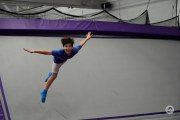






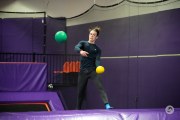















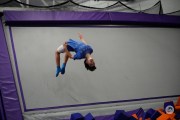






































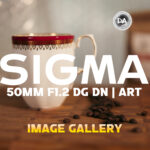 Sigma 50mm F1.2 DG DN | ART Image Gallery
Sigma 50mm F1.2 DG DN | ART Image Gallery  Sigma 50mm F1.2 DG DN | ART Review
Sigma 50mm F1.2 DG DN | ART Review  7Artisans AF 50mm F1.8 Photo Gallery
7Artisans AF 50mm F1.8 Photo Gallery 
